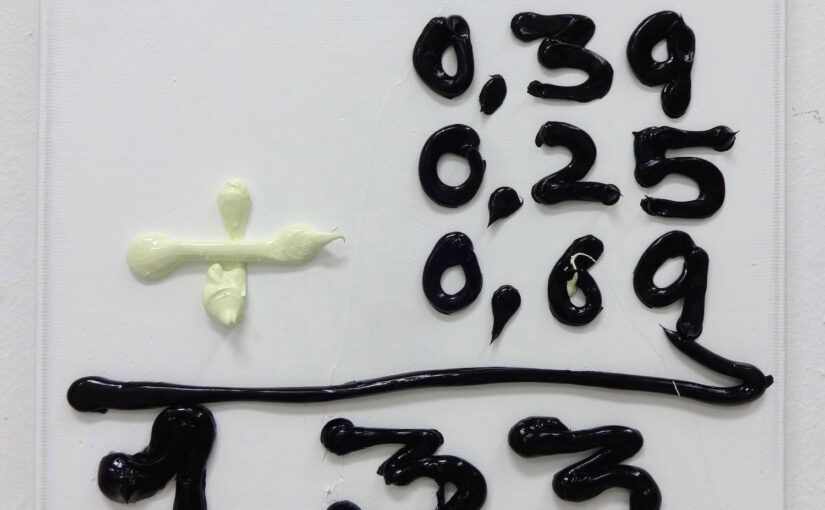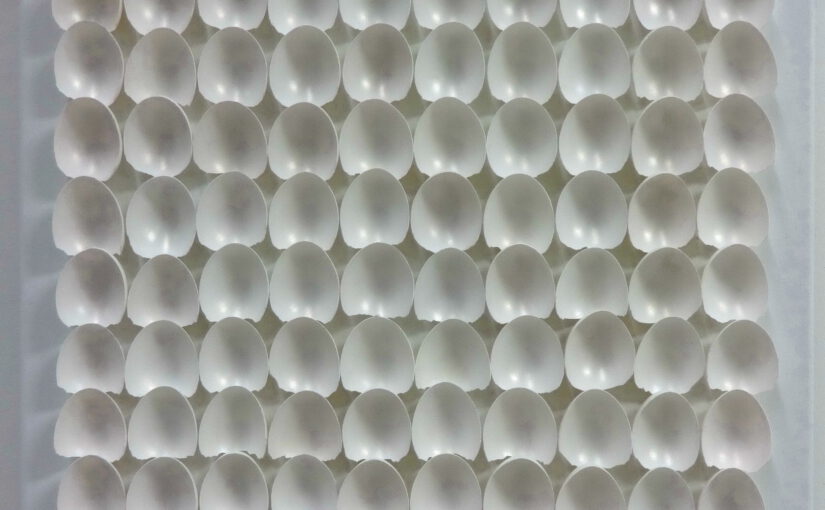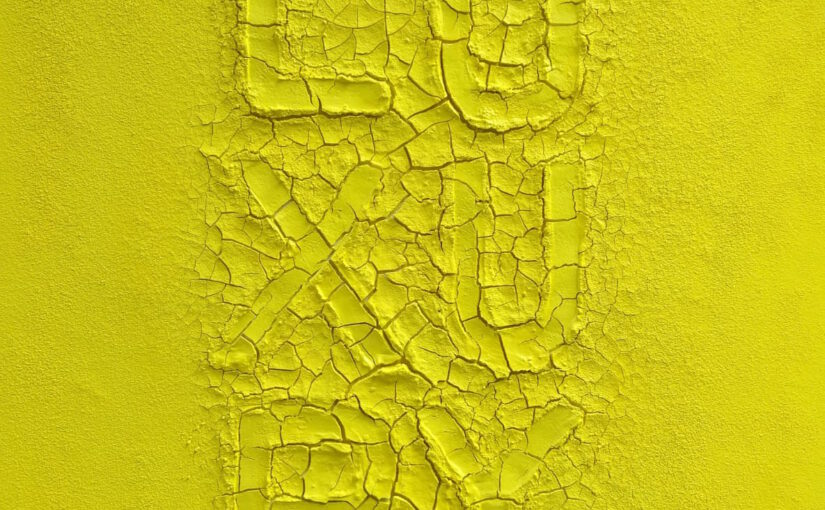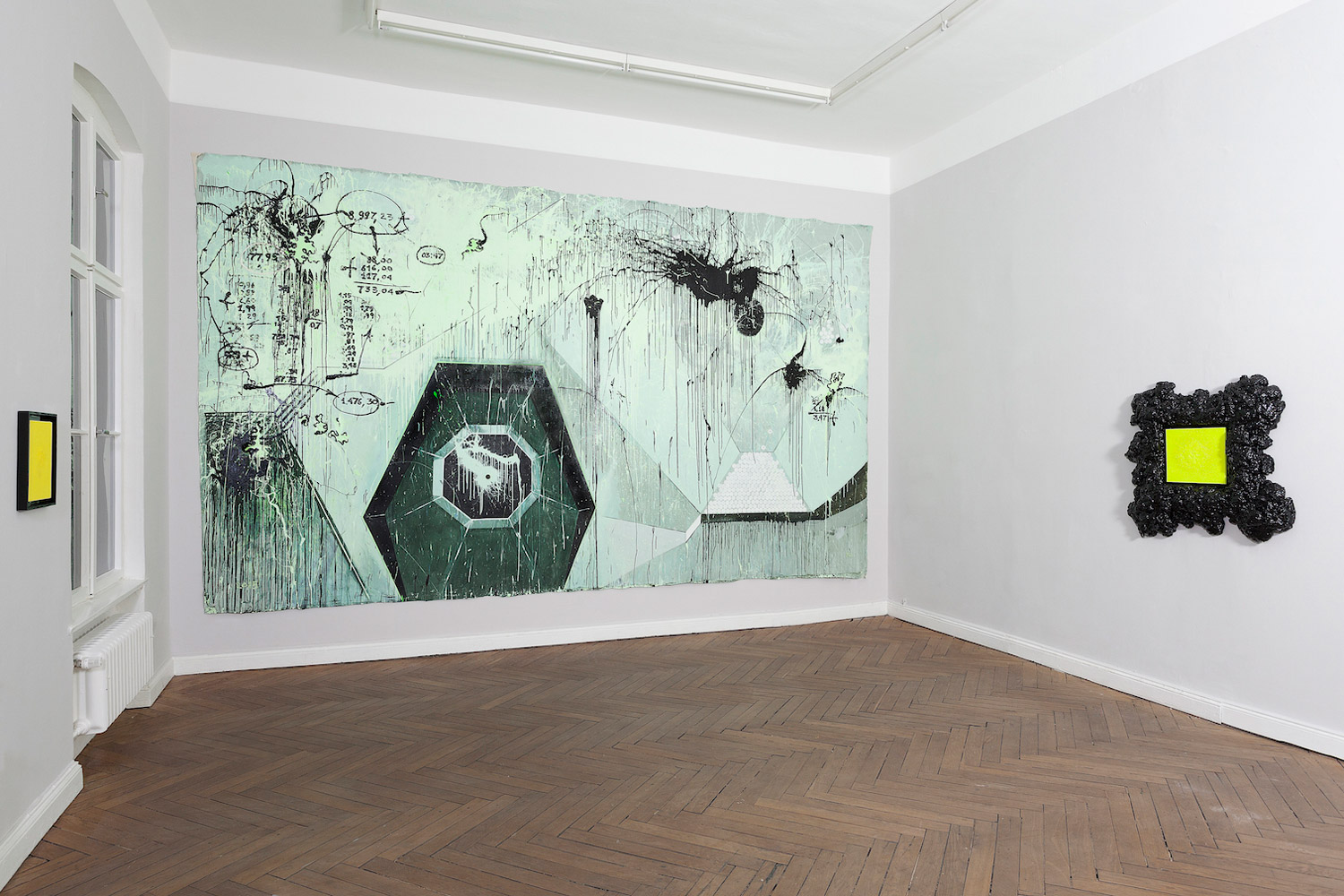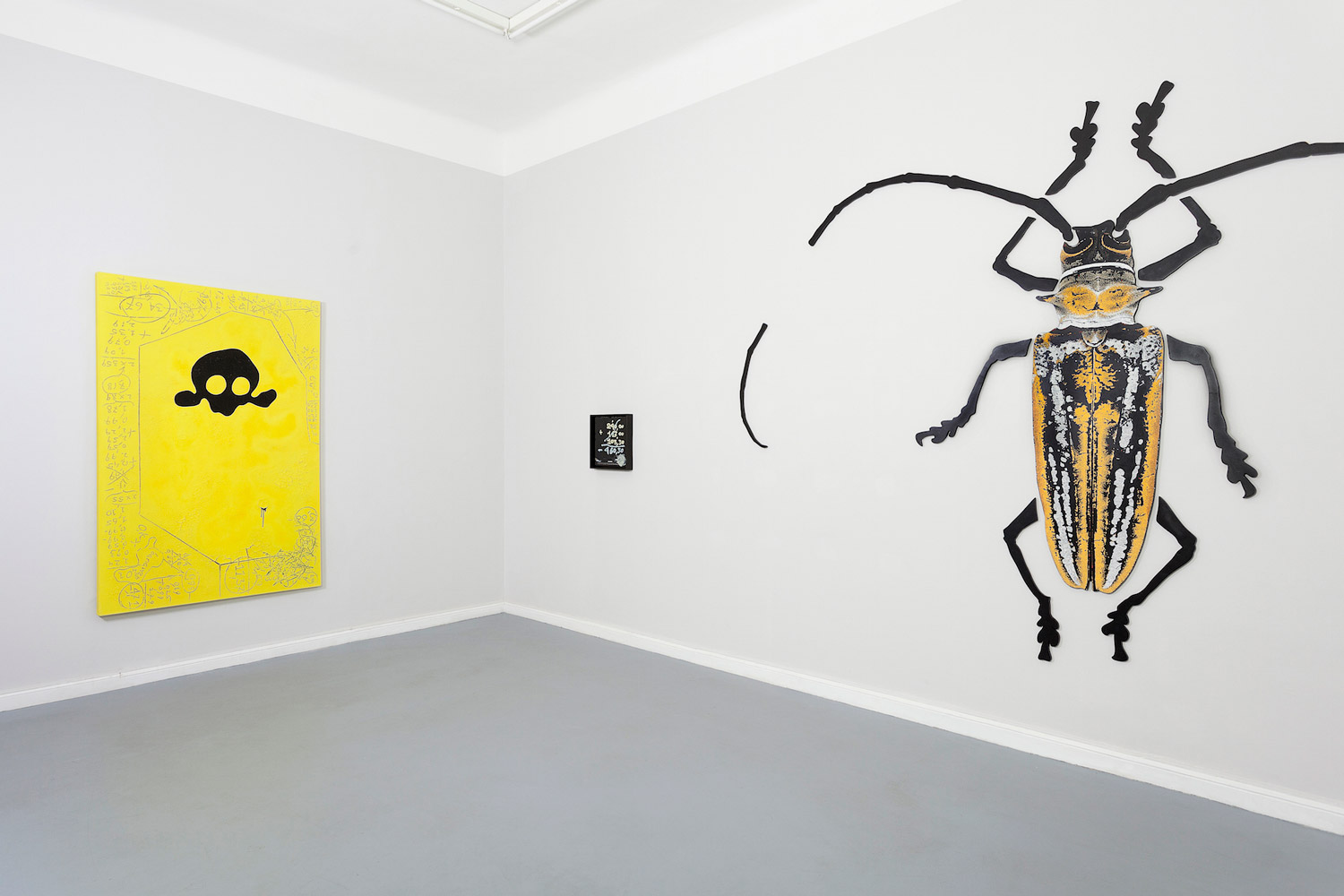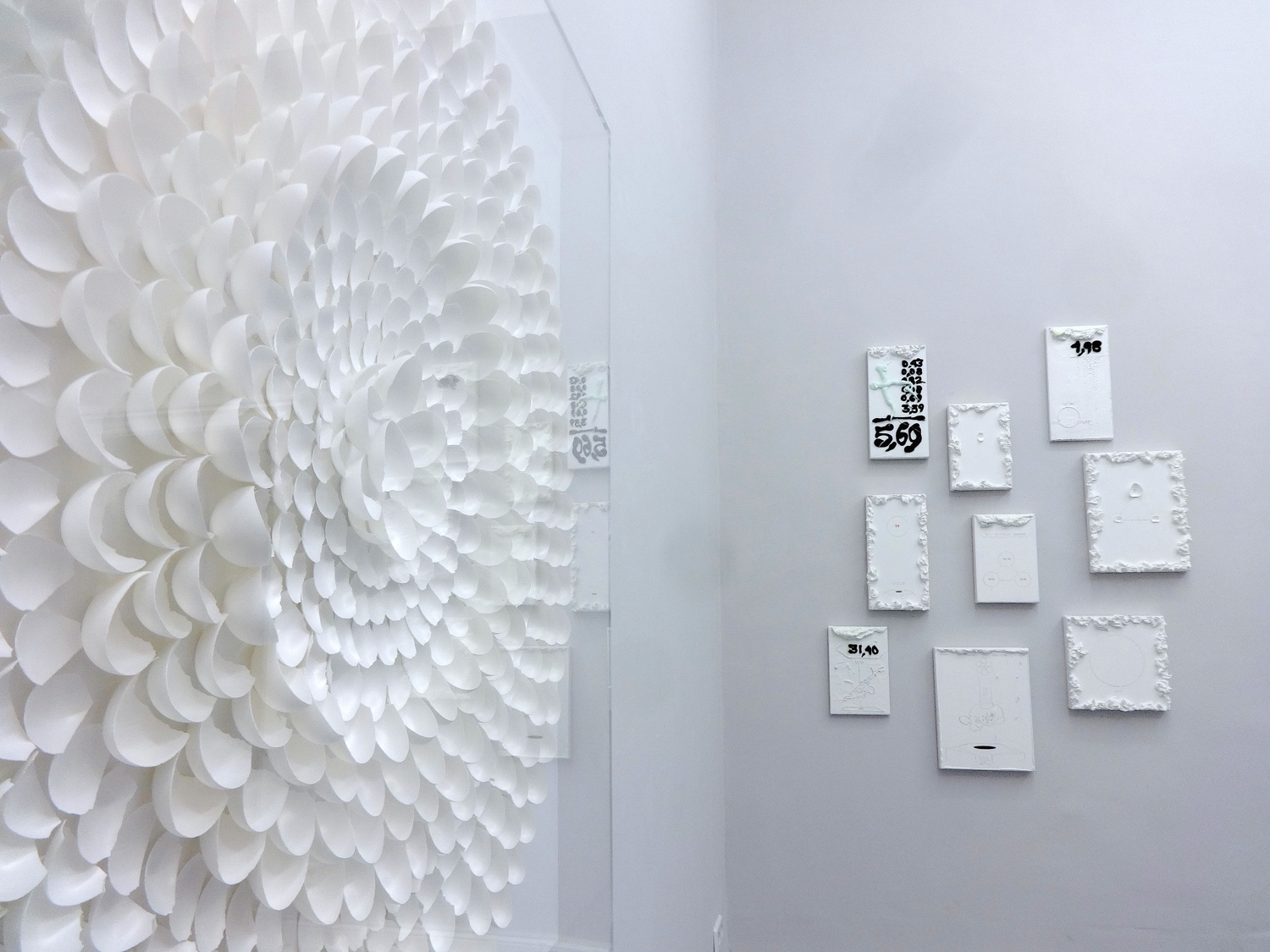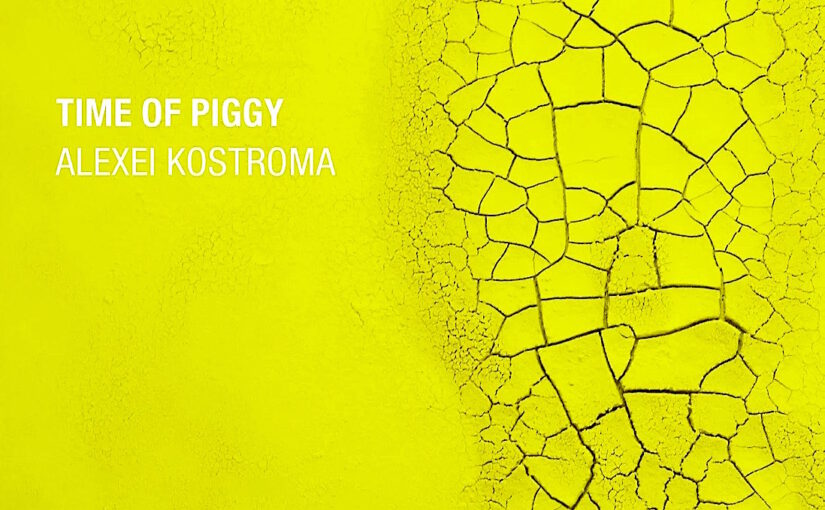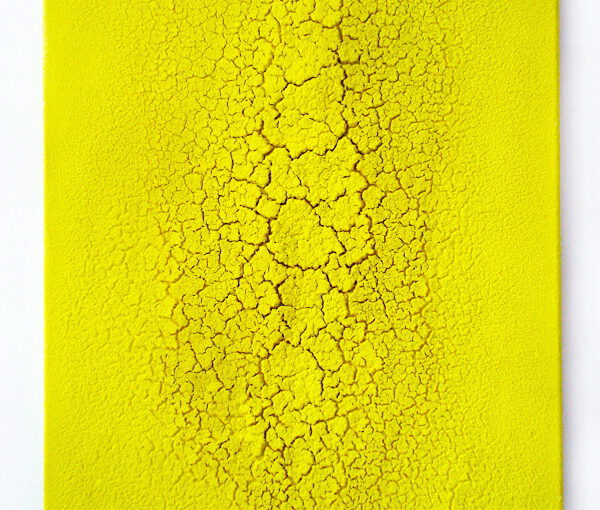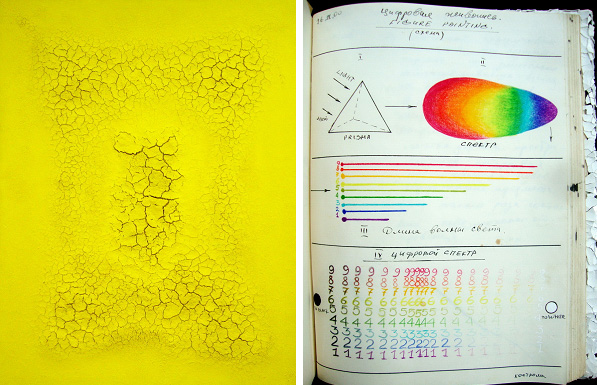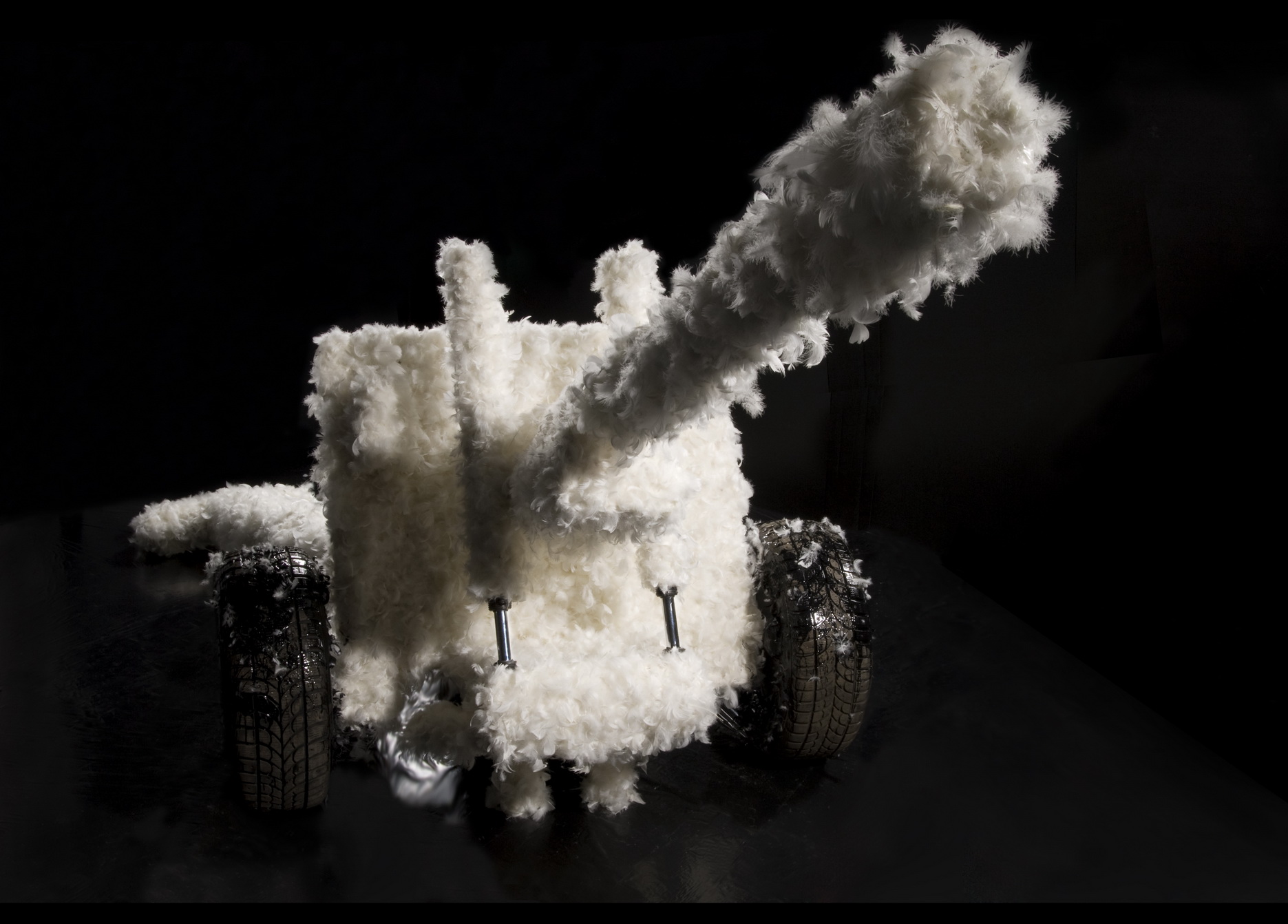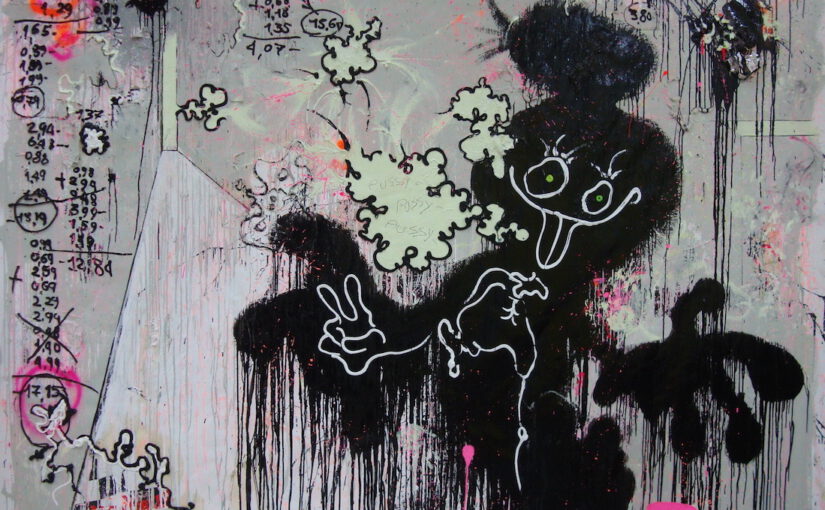
SPRING SALE . 2007 / From the Series TALKING HEADS
Oil on canvas, 150 x 200 cm

SAATCHI’S BRAIN . 2005 / From the Series TALKING HEADS
Dyptich, oil on canvas, 200 x 280 cm
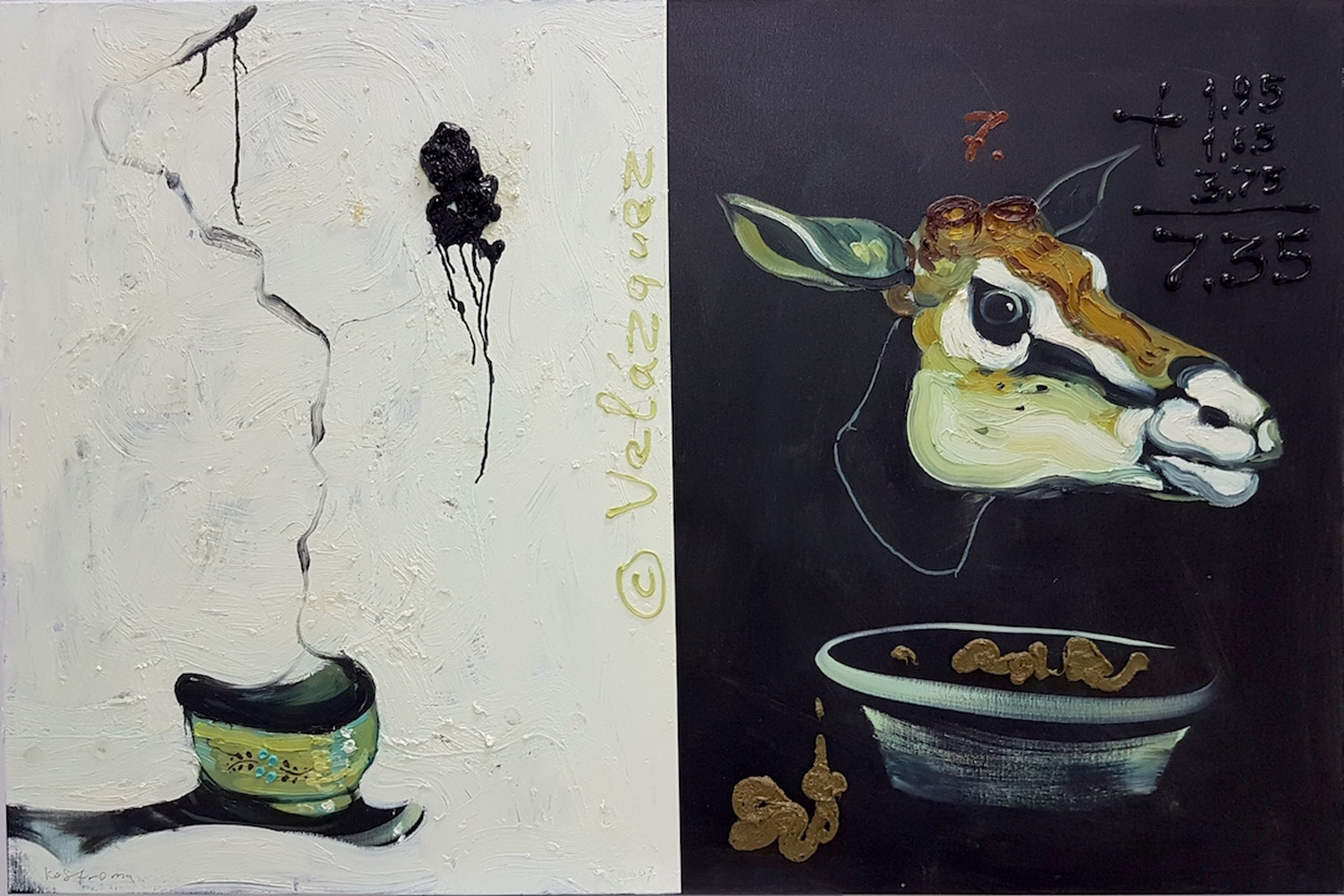
PORRIDGE #2 . BILL 7,35 / Homage to Velazquez . 2006
Oil, acrylic gel on canvas, 100 x 150 cm
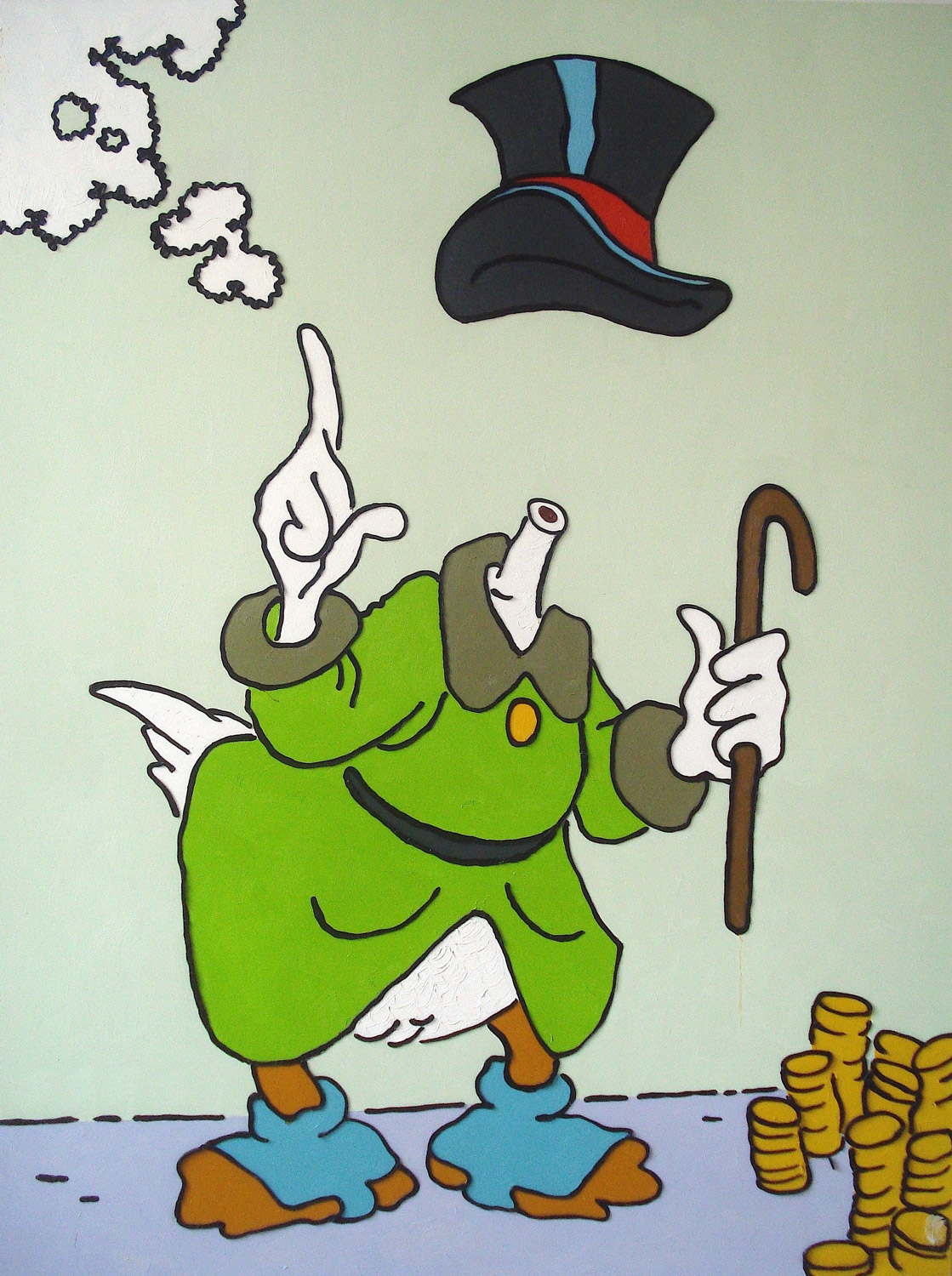
NO CASH NO FLASH . 2006 / From the Series TALKING HEADS
Oil on canvas, 200 x 150 cm

SURPRISE / Homage to Gerhard Richter . 2007
Oil on Fabriano Accademia paper, laid down on canvas, 150 x 110 cm

BLACK SMILE . 2007 / From the Series MASKS
Oil on canvas, 100 x 80 cm

LAST BILL OF VAN MICKEY / Homage to Van Gogh . 2018
Oil on canvas, 60 x 50 cm
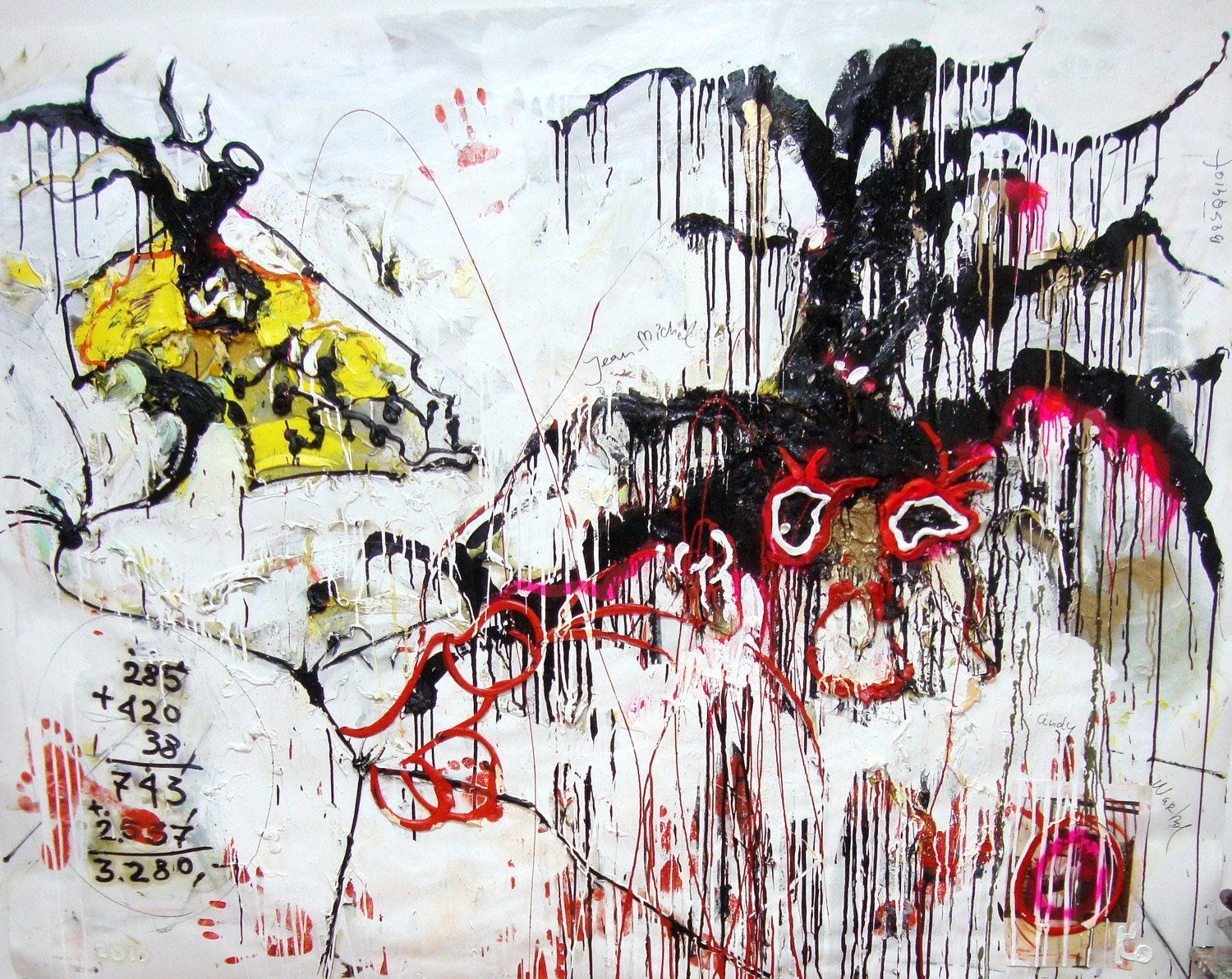
DEBTS, BASQUIAT & ANDY WARHOL . 2010
Oil on Fabriano Accademia paper, laid down on canvas, 150 x 200 cm

BILL 5,10 . 2013
Oil on paper, laid down on canvas, 68 x 108 cm

MAMA – MoMA . 2011
Oil on Fabriano Accademia paper, 150 x 300 cm

THE LAST DAY . 2010
Oil on Fabriano Accademia paper, 150 x 300 cm
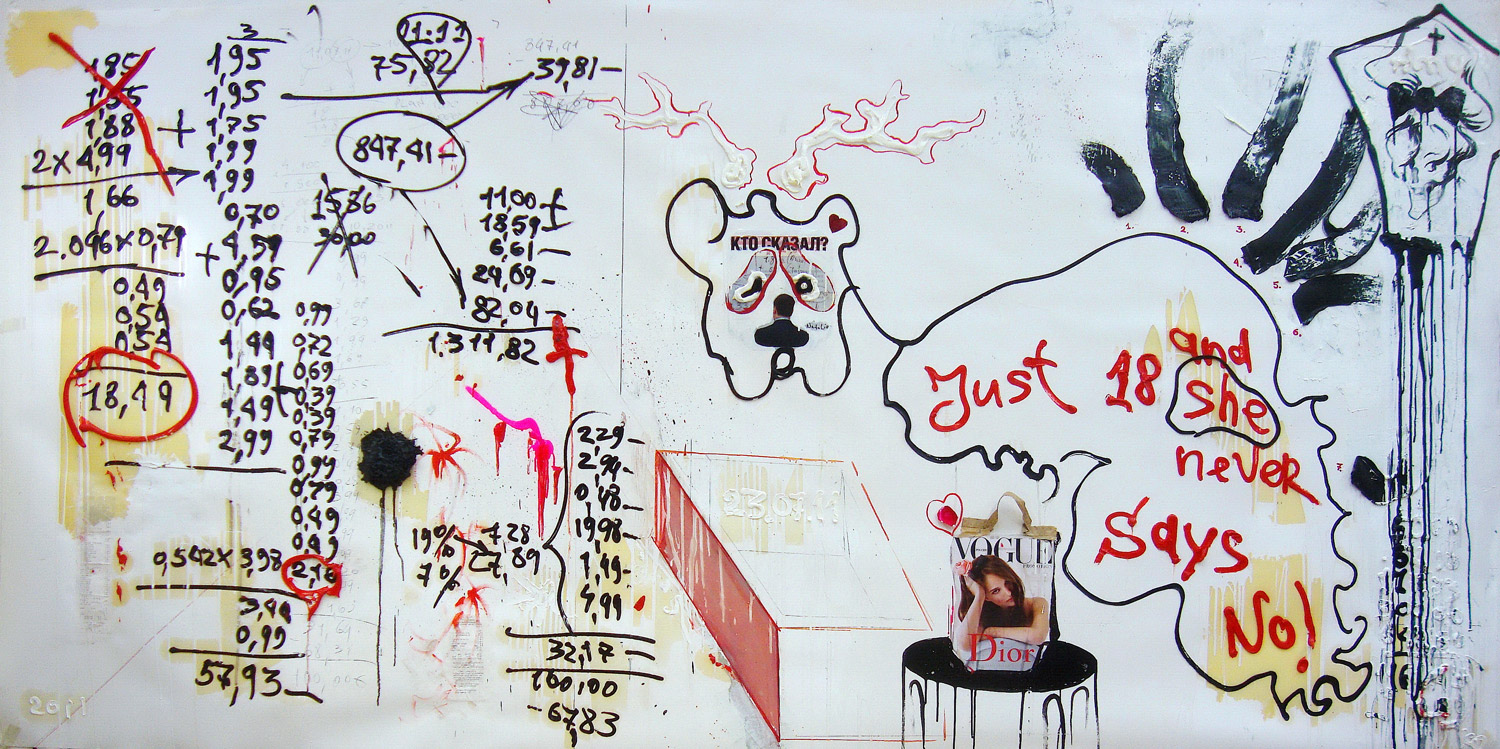
MR. PRESIDENT / to Amy Winehouse . 2011
Oil on Fabriano Accademia paper, 150 x 300 cm
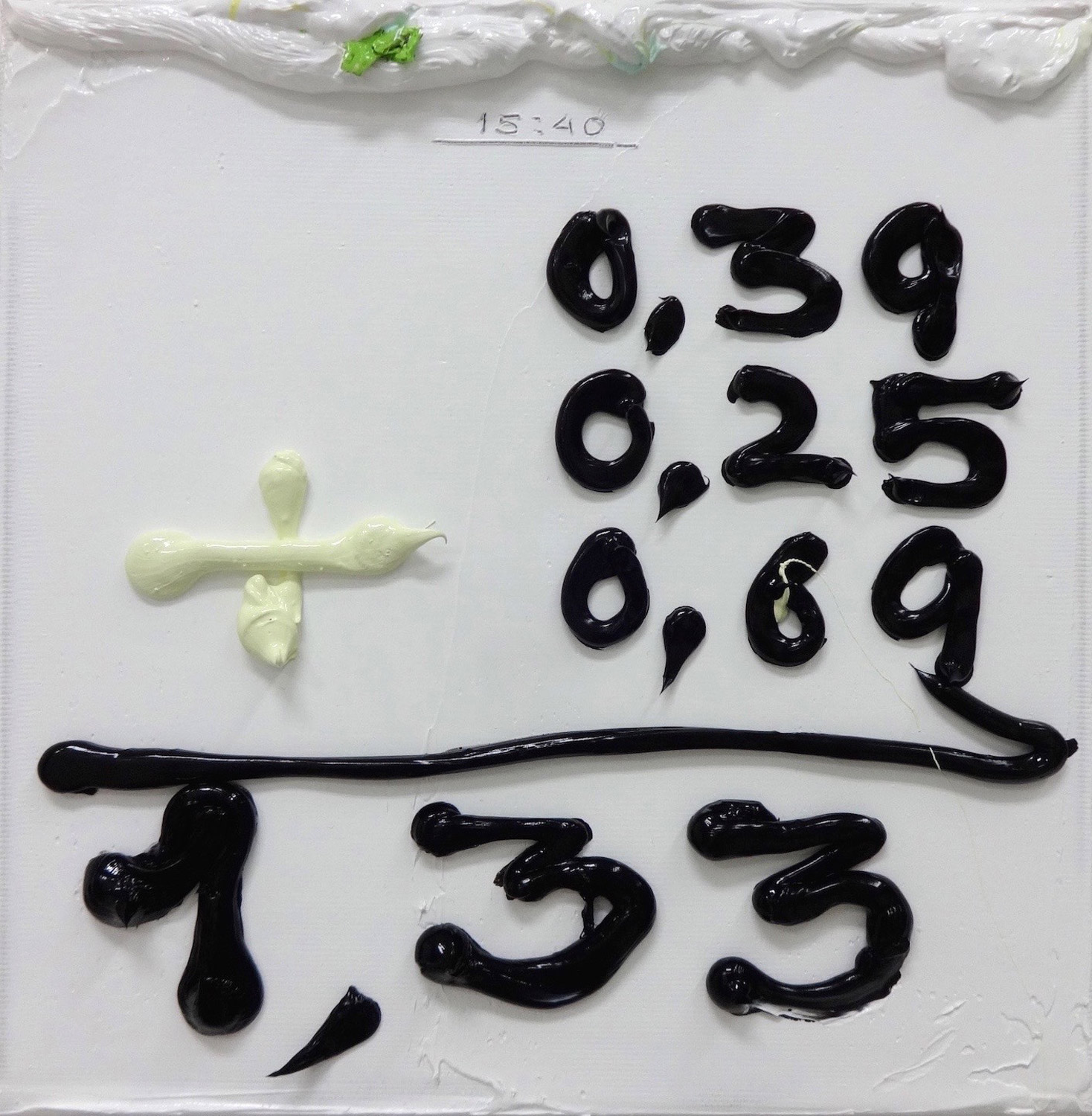
BILL 1,33 . 2016
Oil on canvas, 25 x 25 cm
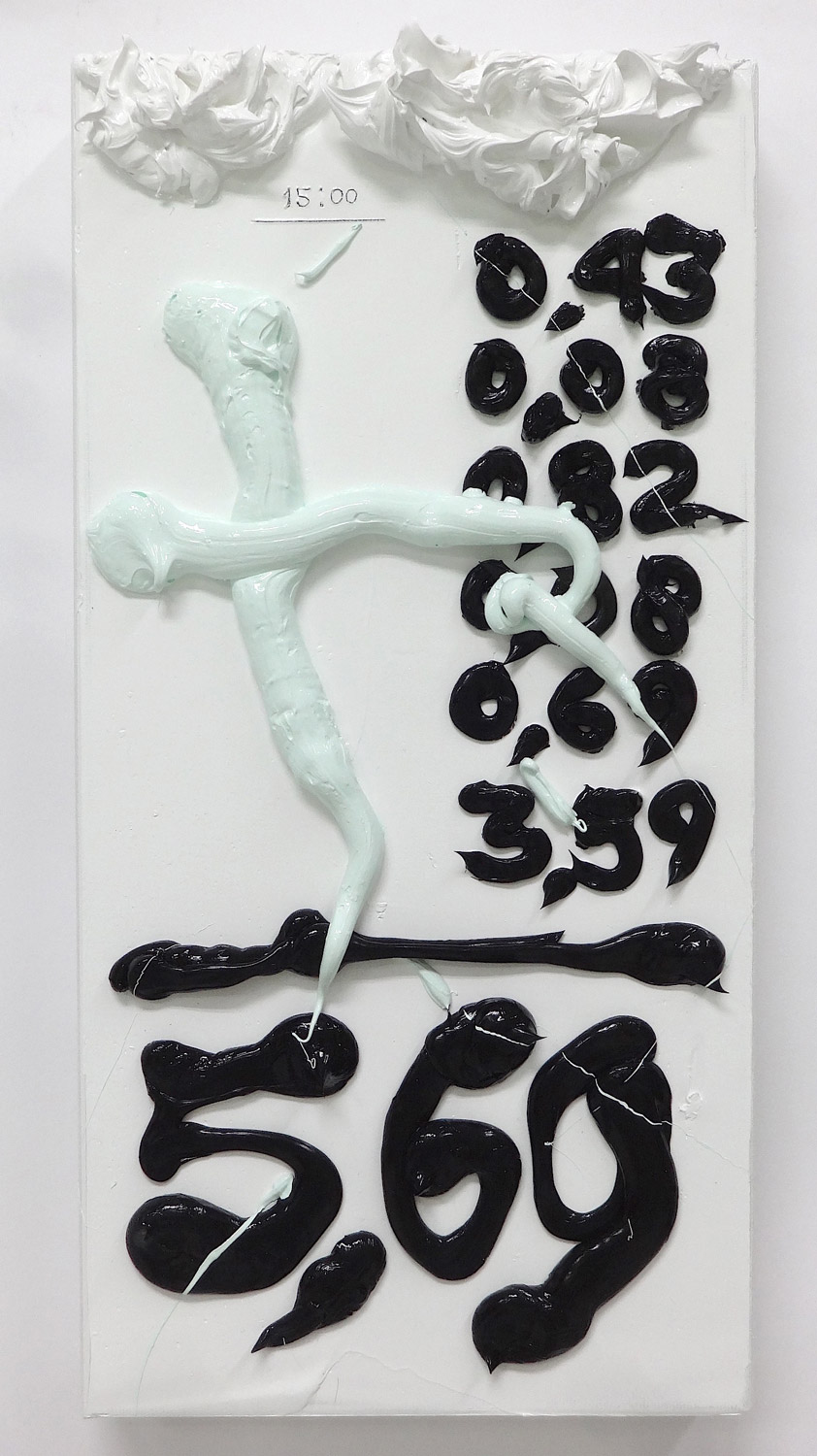
BILL 5,69 . 2016
Oil on canvas, 40 x 20 cm
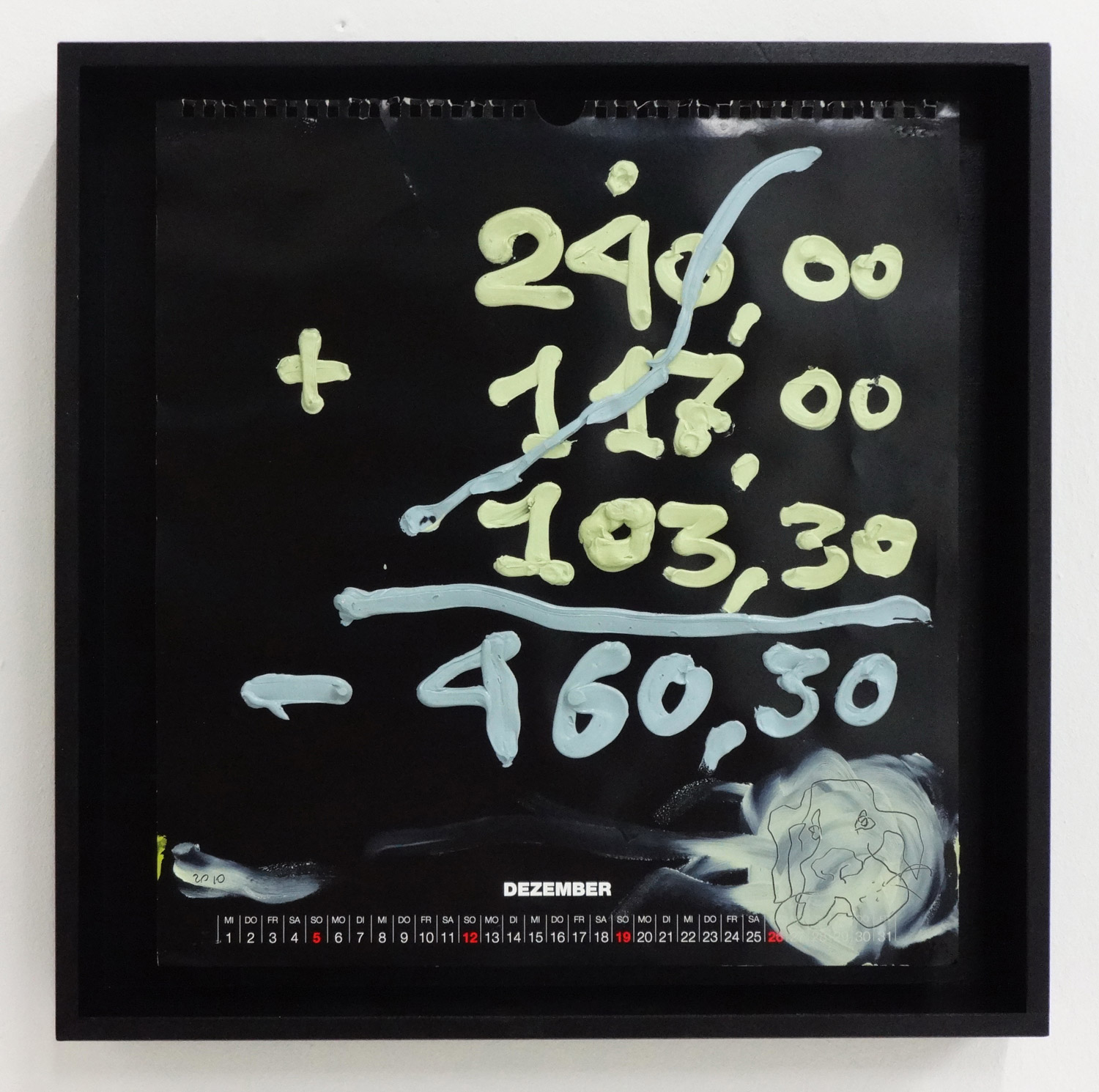
BILL 460,30 . 2010 / From the Series BLACK CALENDER
Oil on calendar paper, laid down on canvas, 36 x 33 cm

SPRING, DEBTS & ALLERGY . 2008
Oil on canvas, 150 x 100 cm

DESIRE . 2009 / From the Series SCYTHIANS
Oil, acrylic on Fabriano Accademia paper, laid down on canvas, 150 x 100 cm
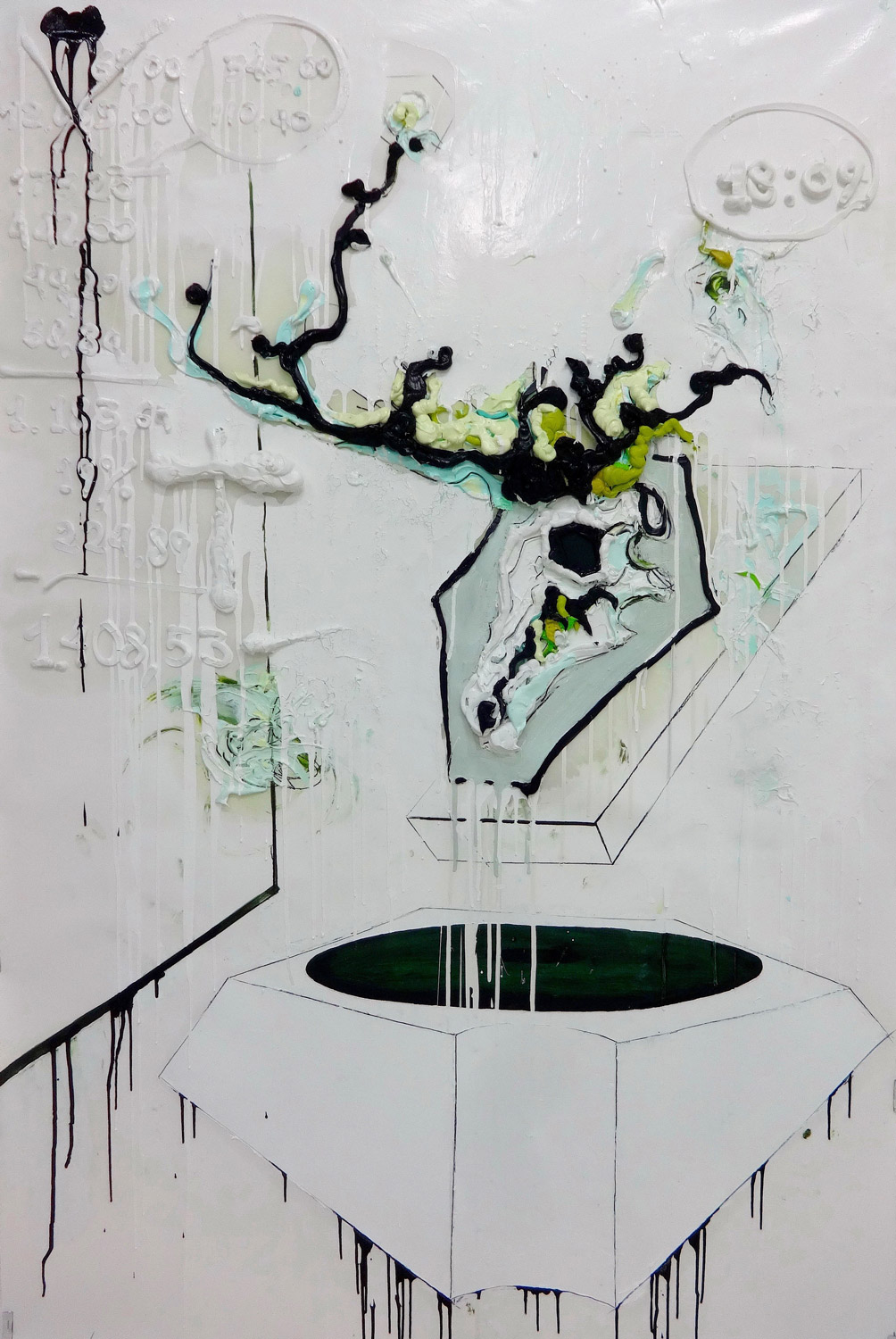
BILL 1408,53 . WHITE DEER . 2015
Oil, acrylic on Fabriano Accademia paper, laid down on canvas, 150 x 100 cm
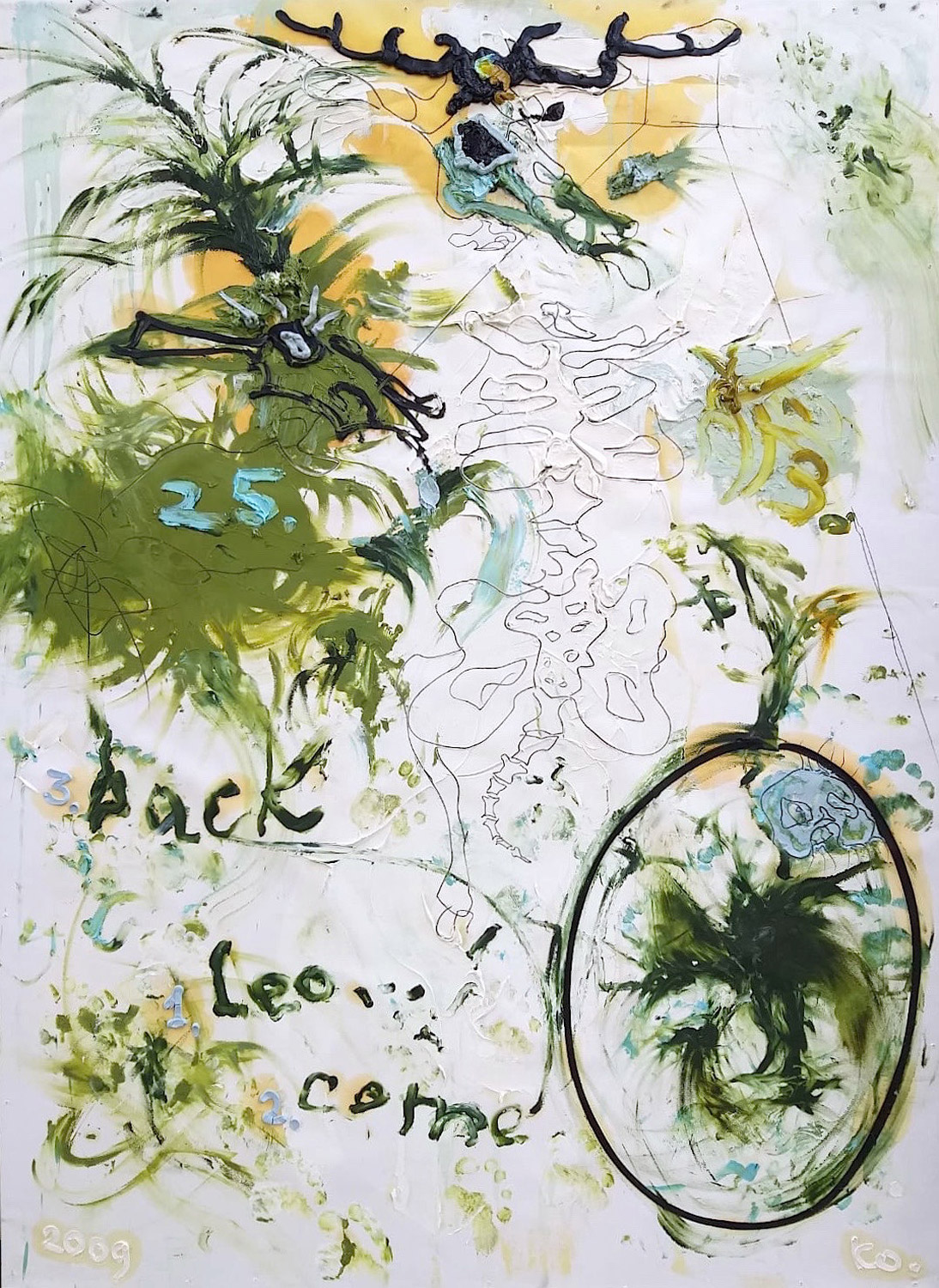
LEO, COME BACK . 2007 / self portrait with my muse
Oil on Fabriano Accademia paper, laid down on canvas, 150 x 110 cm
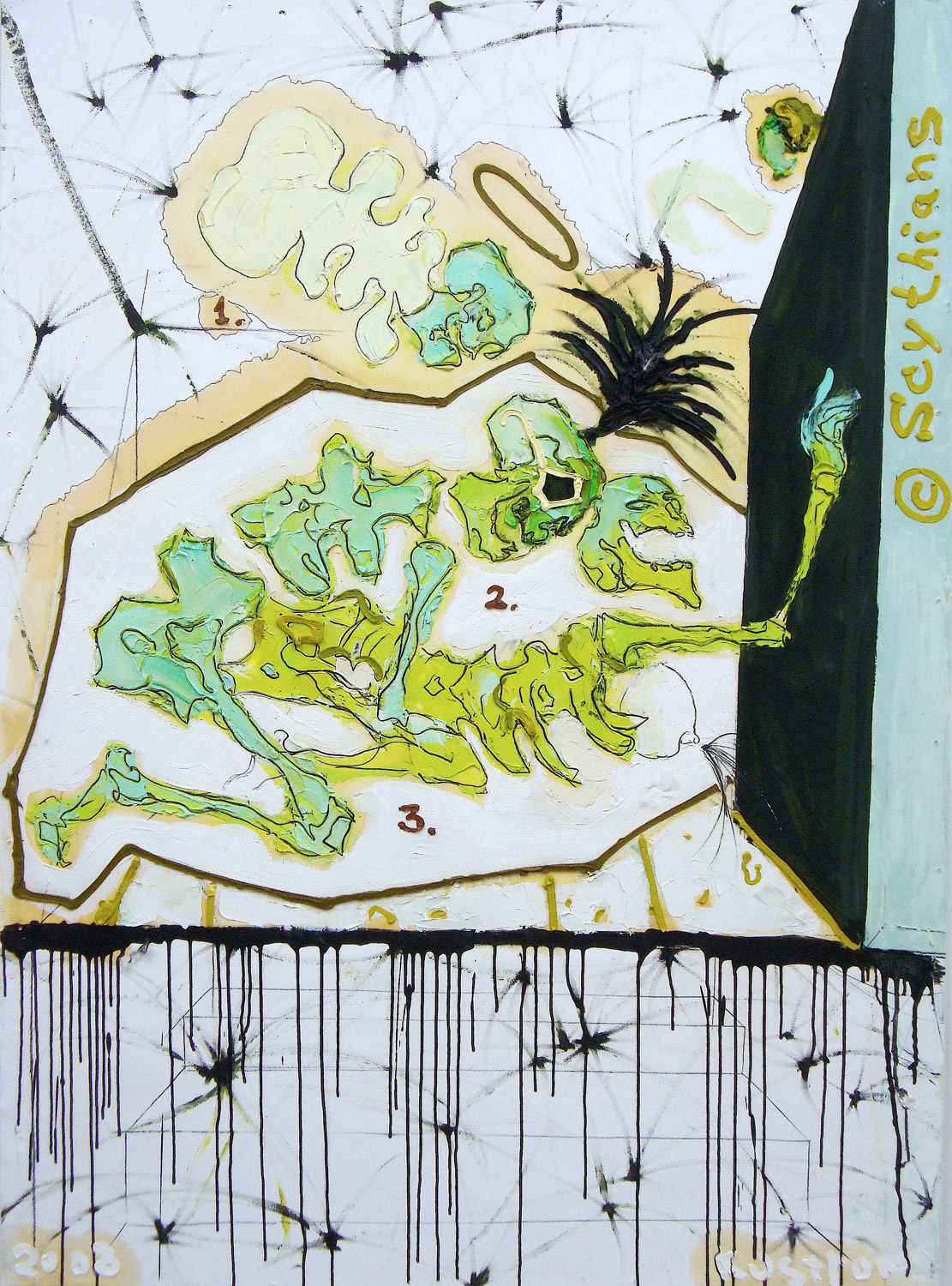
AT DEAD OF NIGHT . 2008 / From the Series SCYTHIANS
Oil on Fabriano Accademia paper, laid down on canvas, 150 x 110 cm
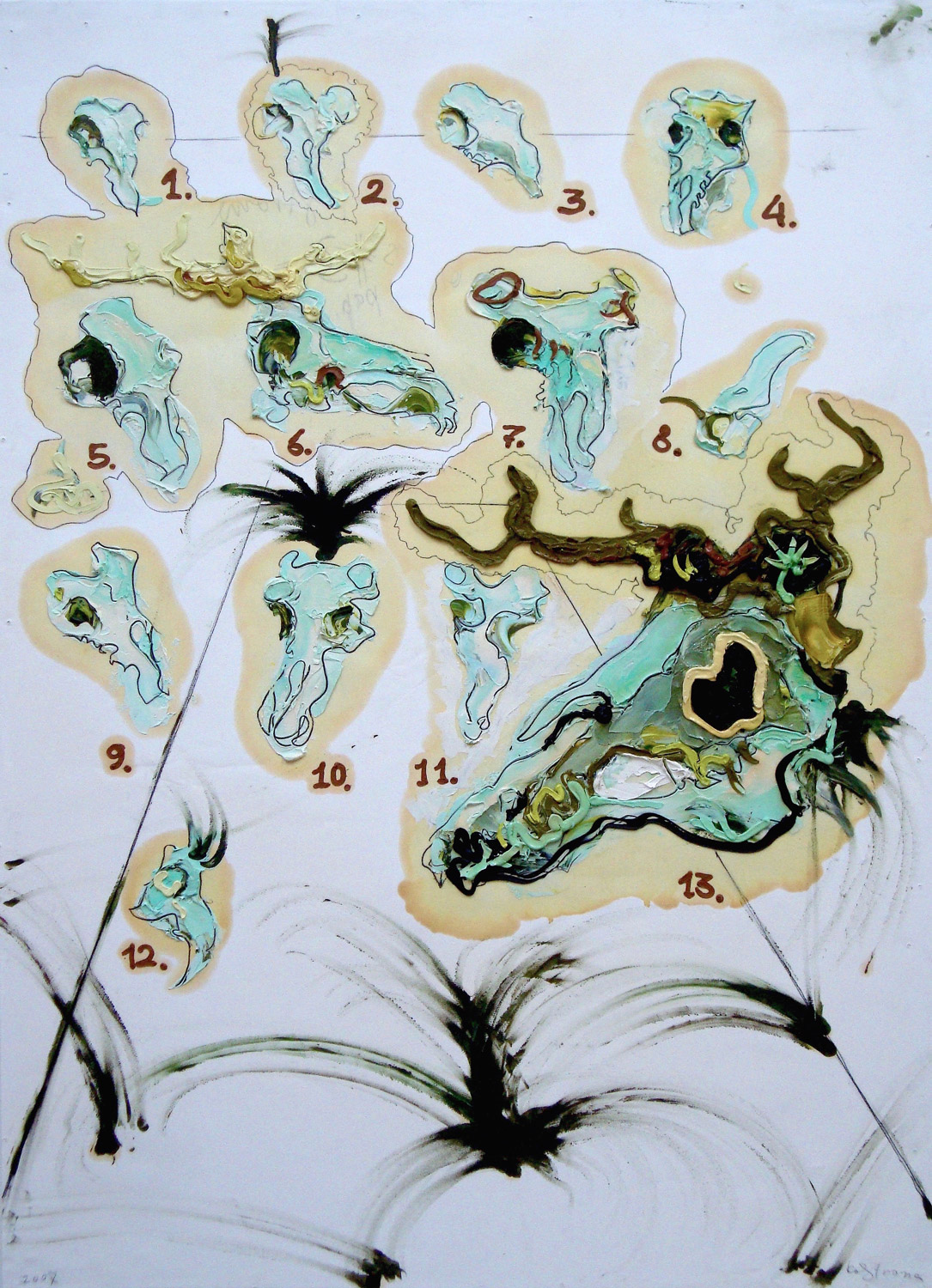
SCYTHIANS #3 . 2008
Oil on Fabriano Accademia paper, laid down on canvas, 150 x 110 cm
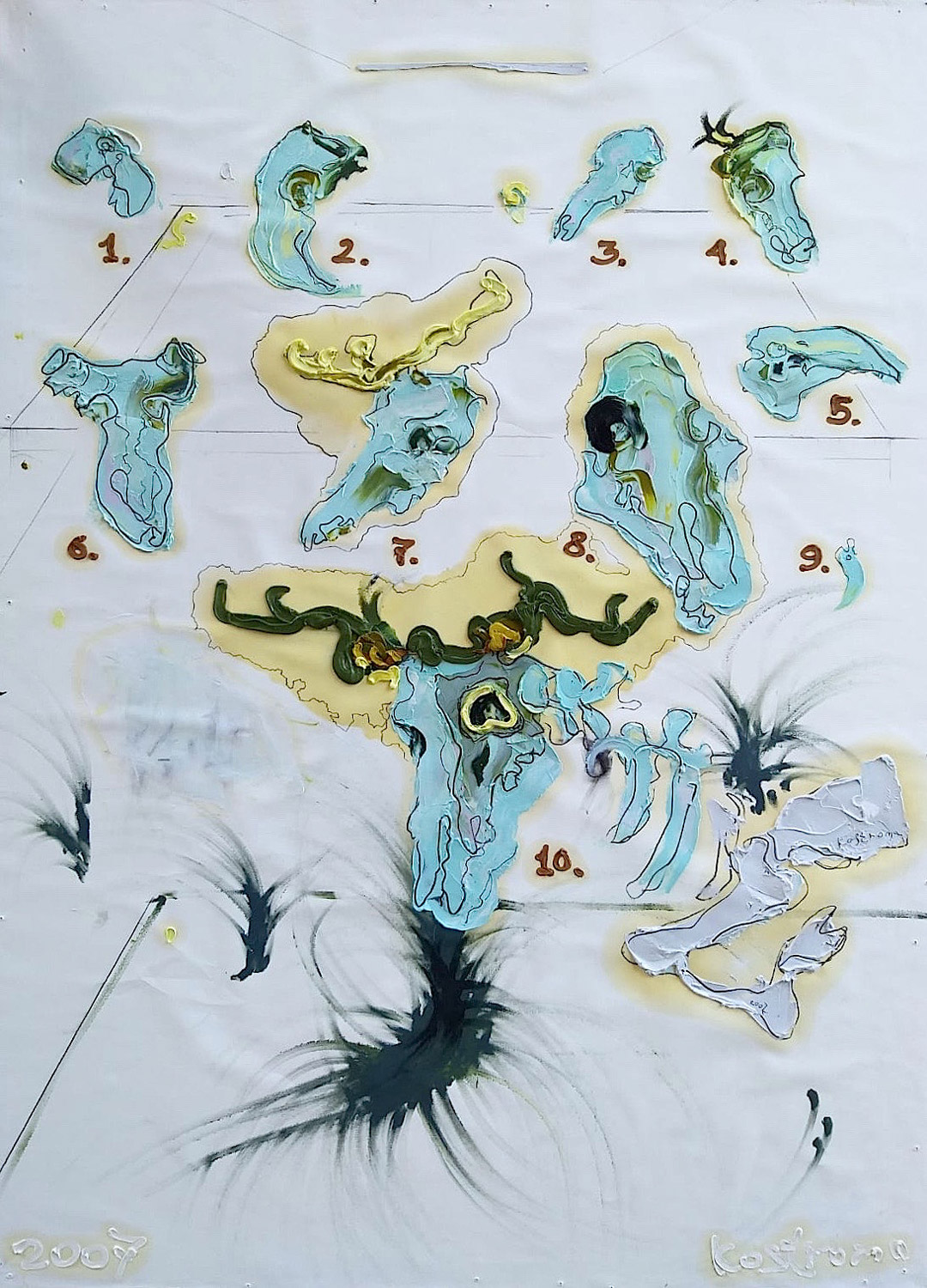
SCYTHIANS #1 . 2007
Oil on Fabriano Accademia paper, laid down on canvas, 150 x 110 cm

From the Series SOAP BUBBLES . 2008
Oil on canvas, 150 x 200 cm
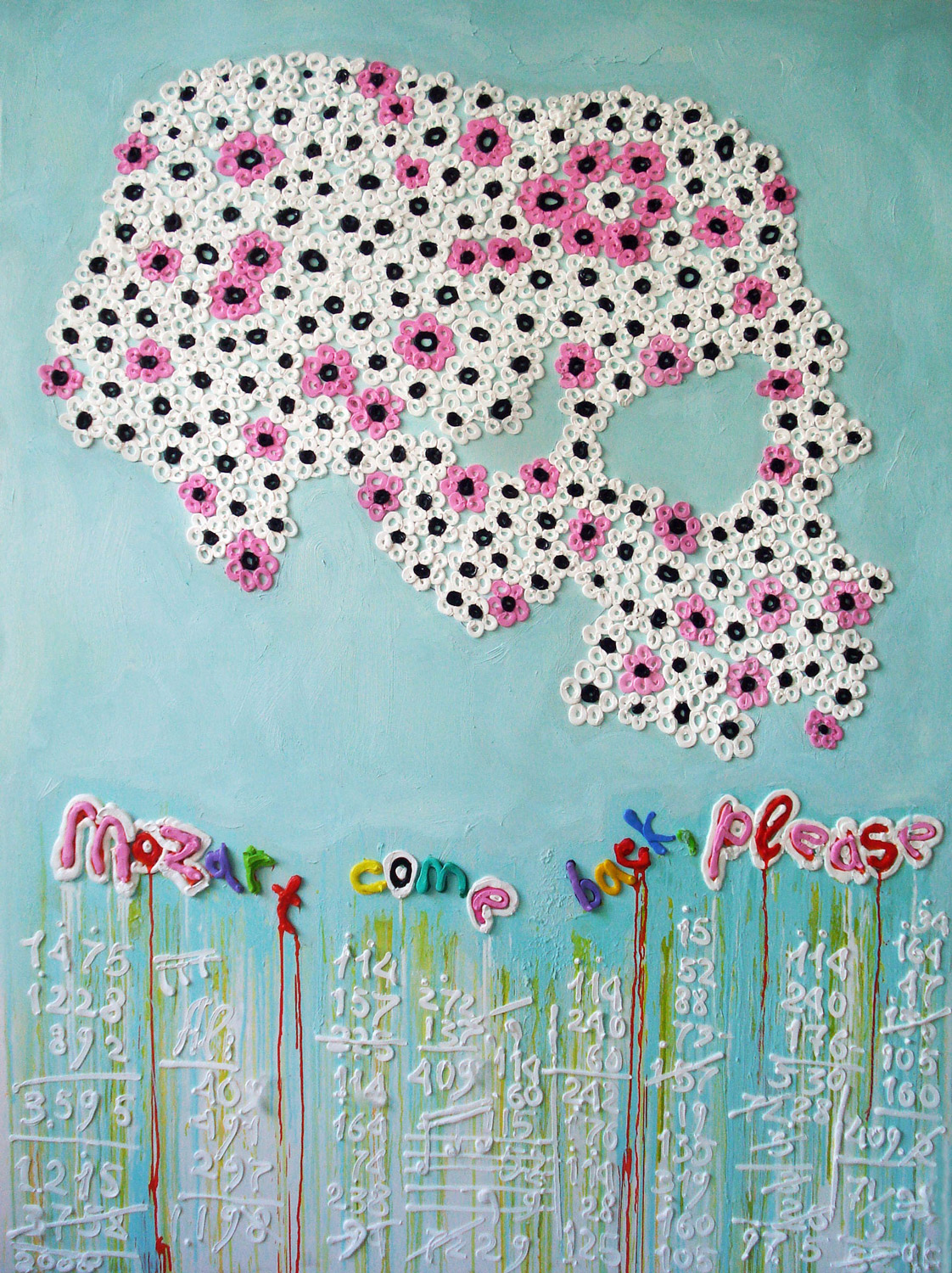
DEBTS OF MOZART . 2008
Oil on canvas, 200 x 150 cm

WHITE CUP . 2009
Oil on Fabriano Accademia paper, laid down on canvas, 150 x 110 cm
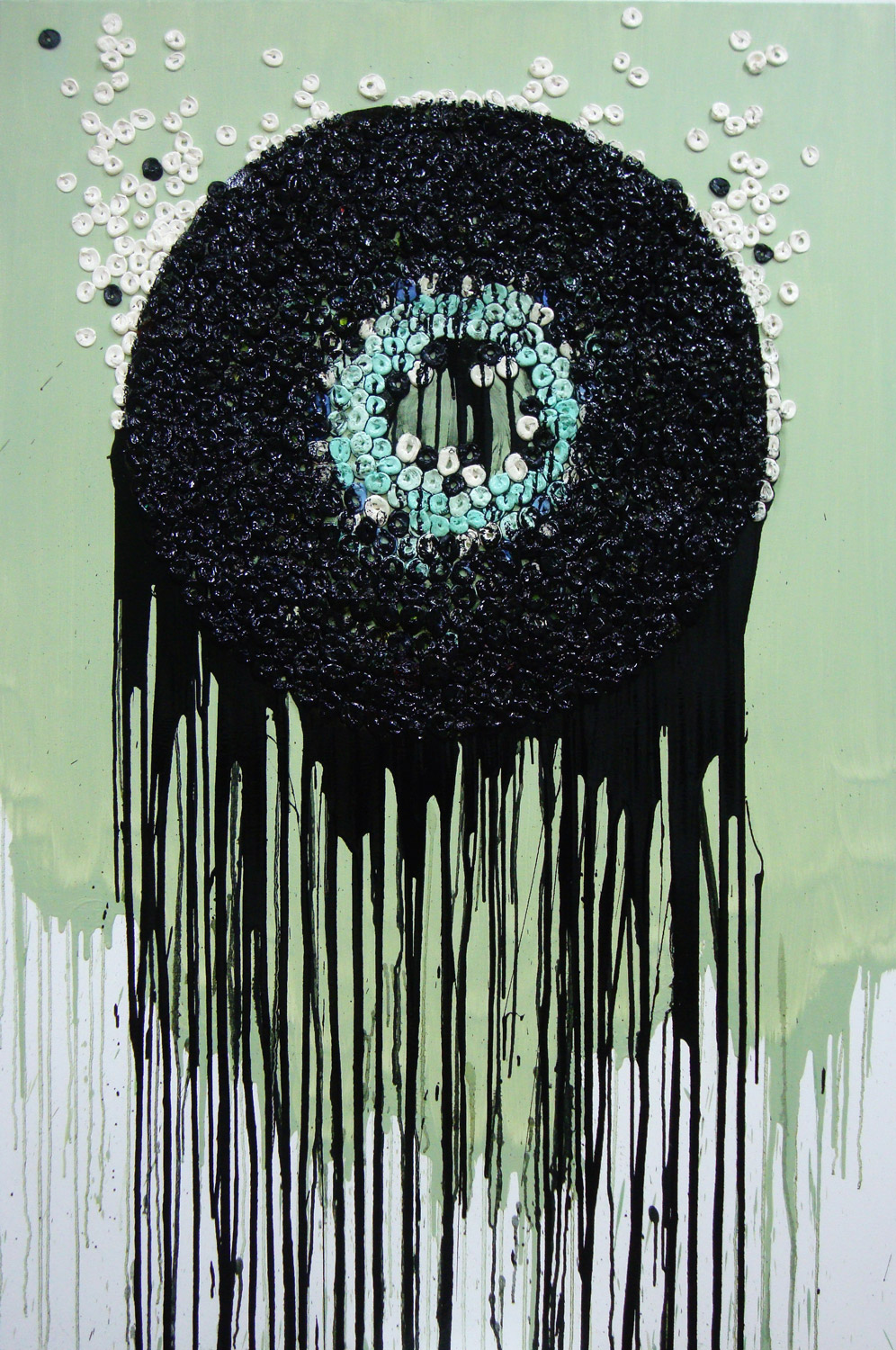
LAST DROP . 2009
Oil on canvas, 150 x 100 cm
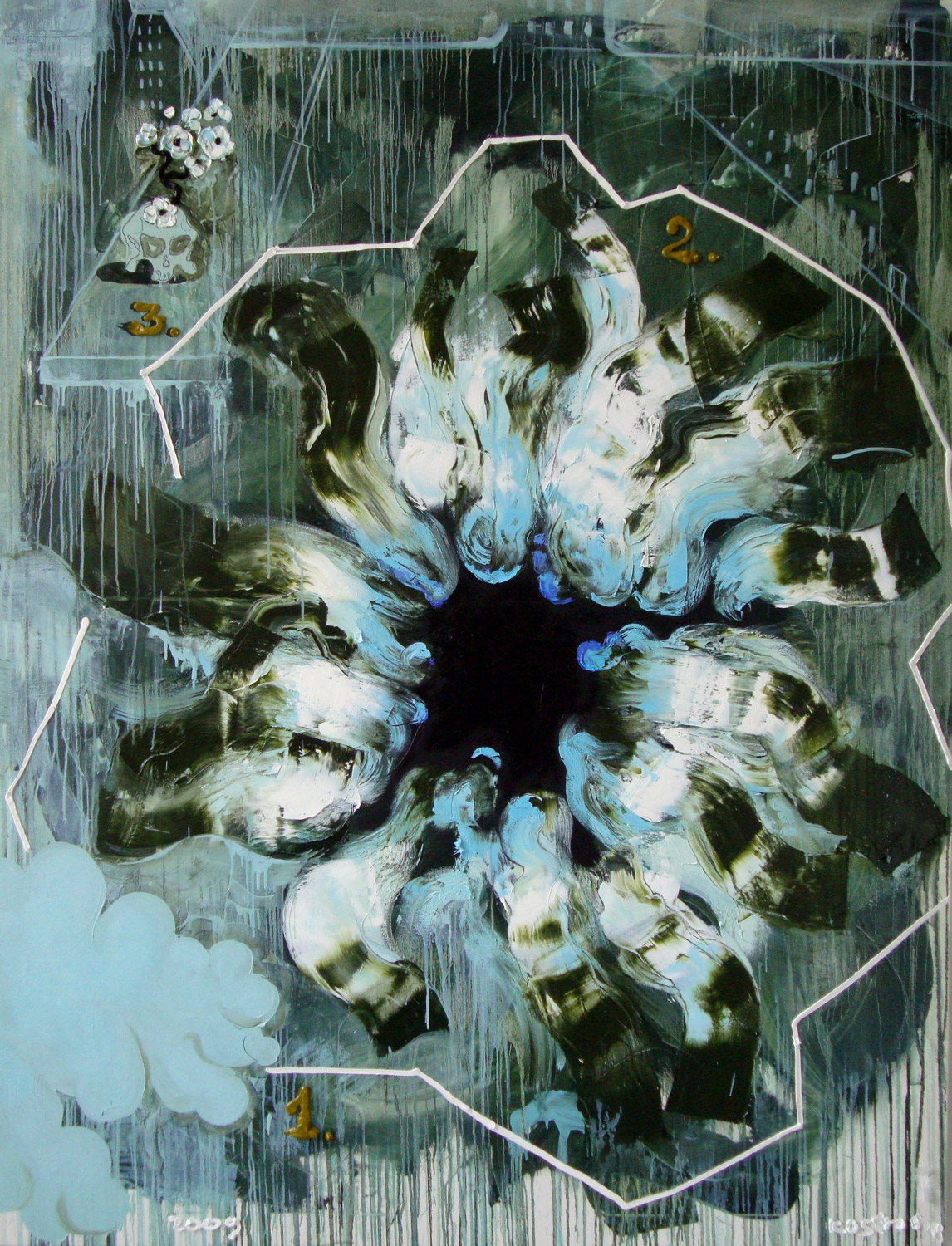
BLUE ENERGY #2 . 2009
Oil on canvas, 200 x 150cm
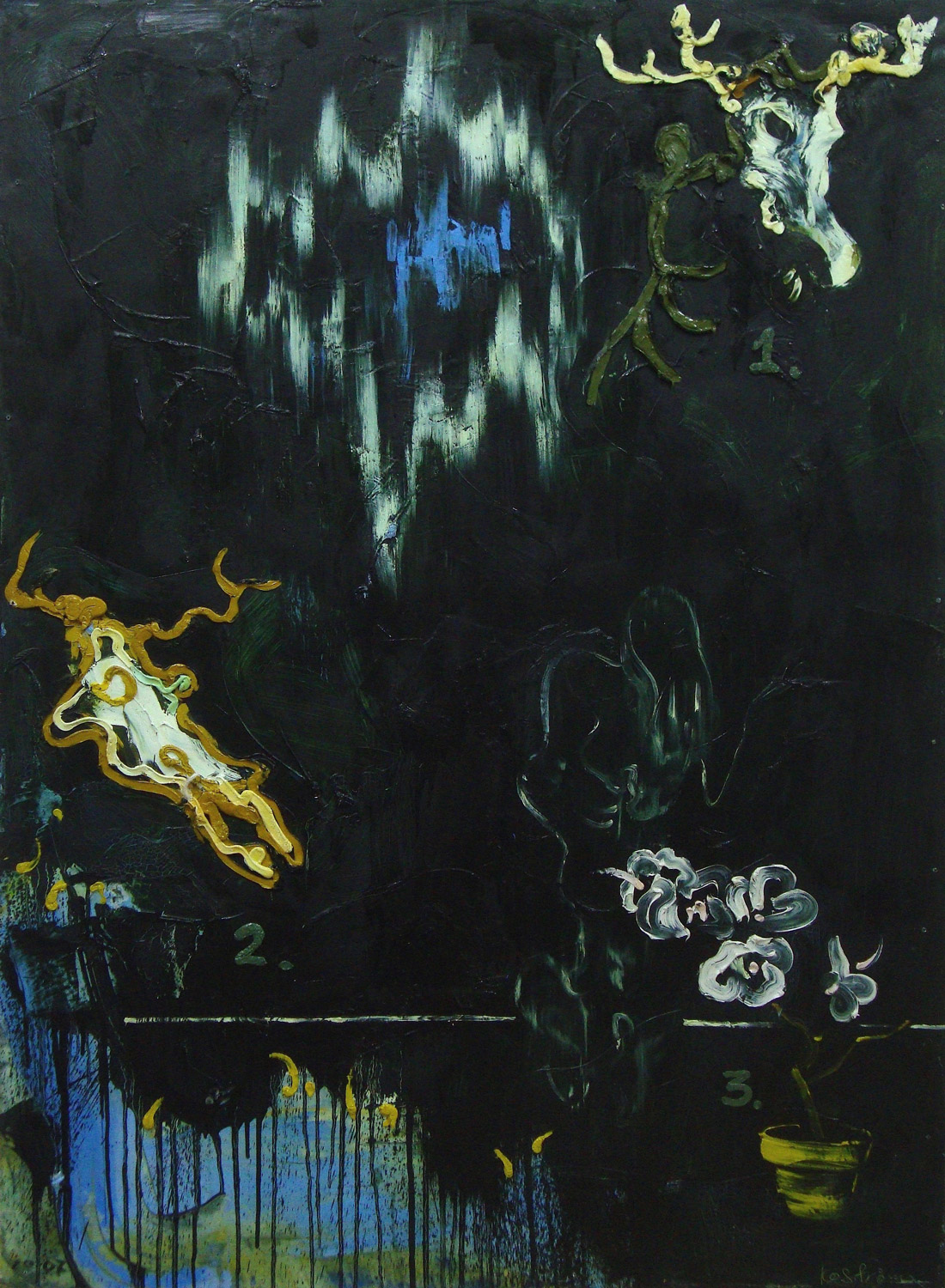
ANTICIPATION . 2007
Oil on Fabriano Accademia paper, laid down on canvas, 150 x 110 cm
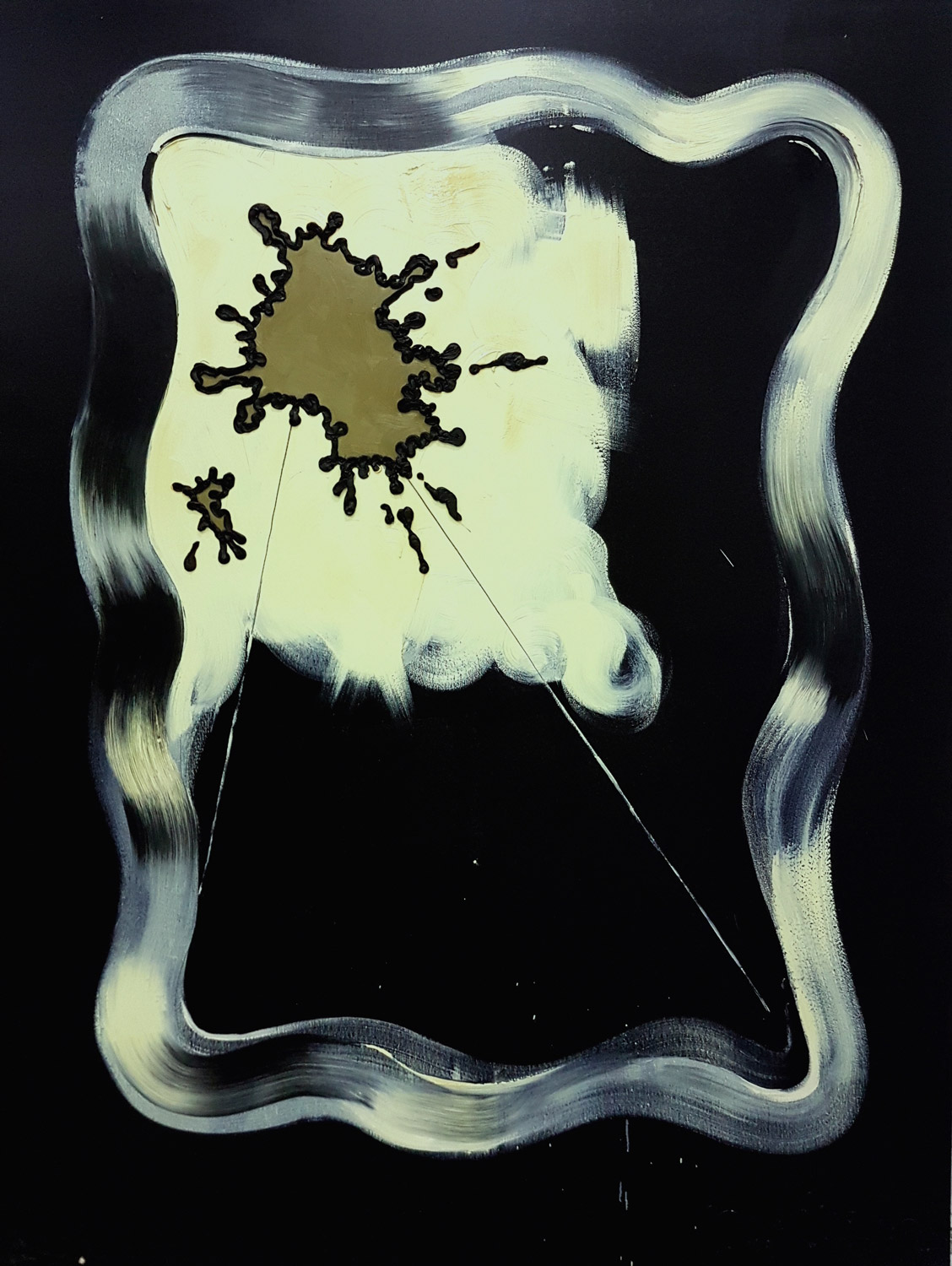
MIRROR / Homage to Francis Bacon . 2008
Oil on canvas, 200 x 150 cm
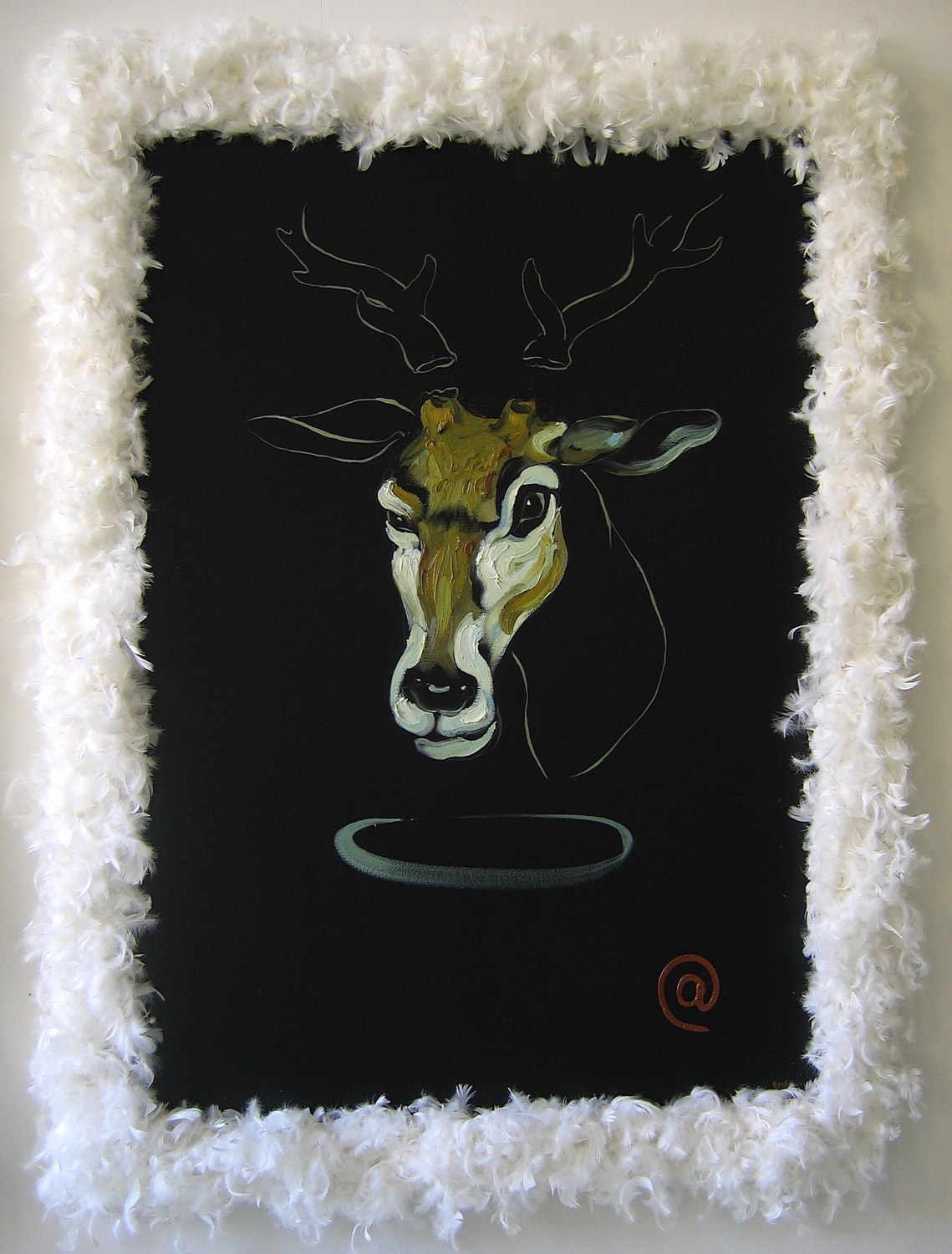
BLACK E-MAIL #1 . 2006
Oil, feathers on canvas, 150 x 110 x 20 cm

BLACK E-MAIL #2 . 2006
Oil, feathers on canvas, 150 x 110 x 20 cm

SOLITUDE / Homage to Francis Bacon . 2007
Oil, feathers on canvas, 200 x 150 x 20 cm
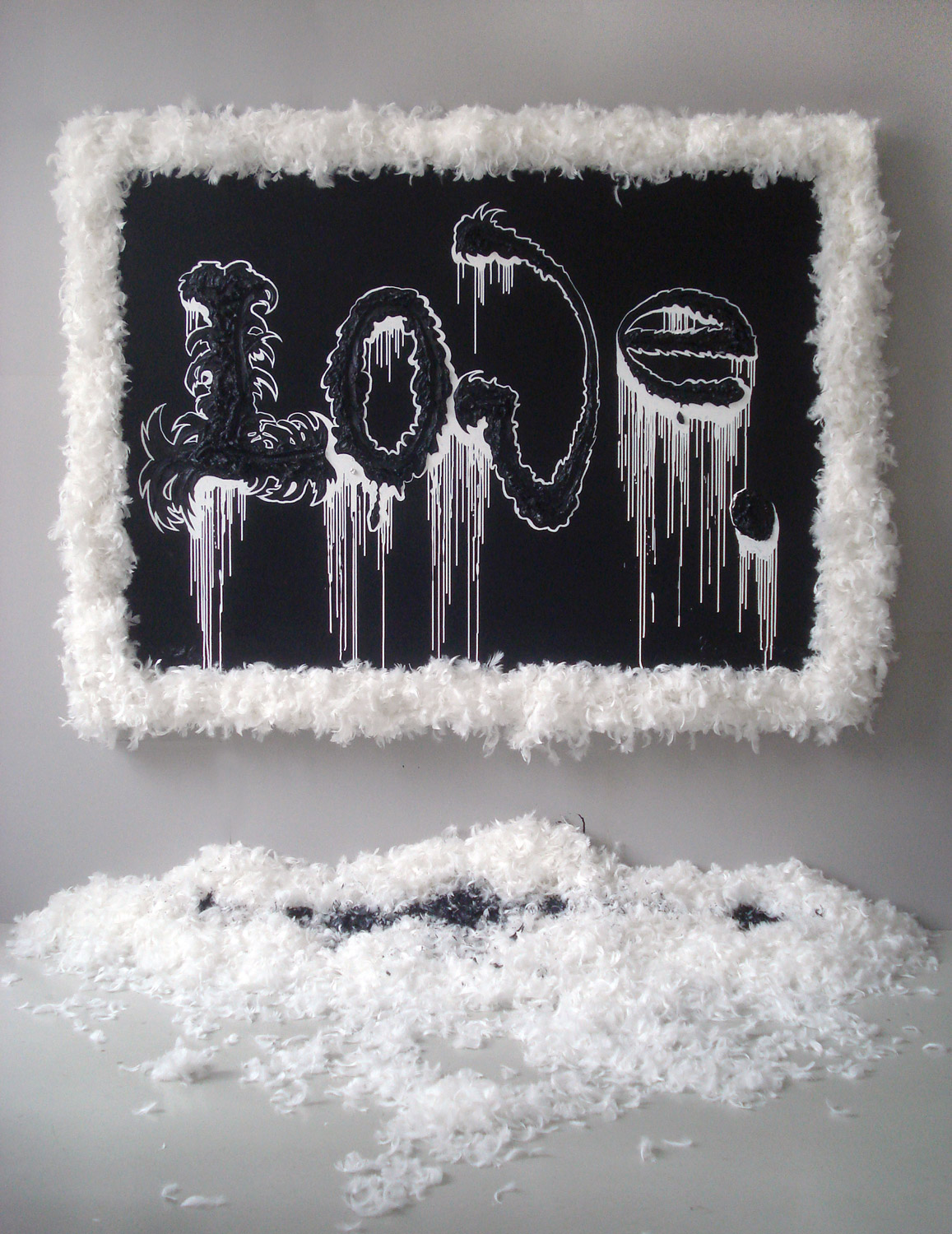
LOVE . 2006
Oil, feathers on canvas, 170 x 220 x 20 cm
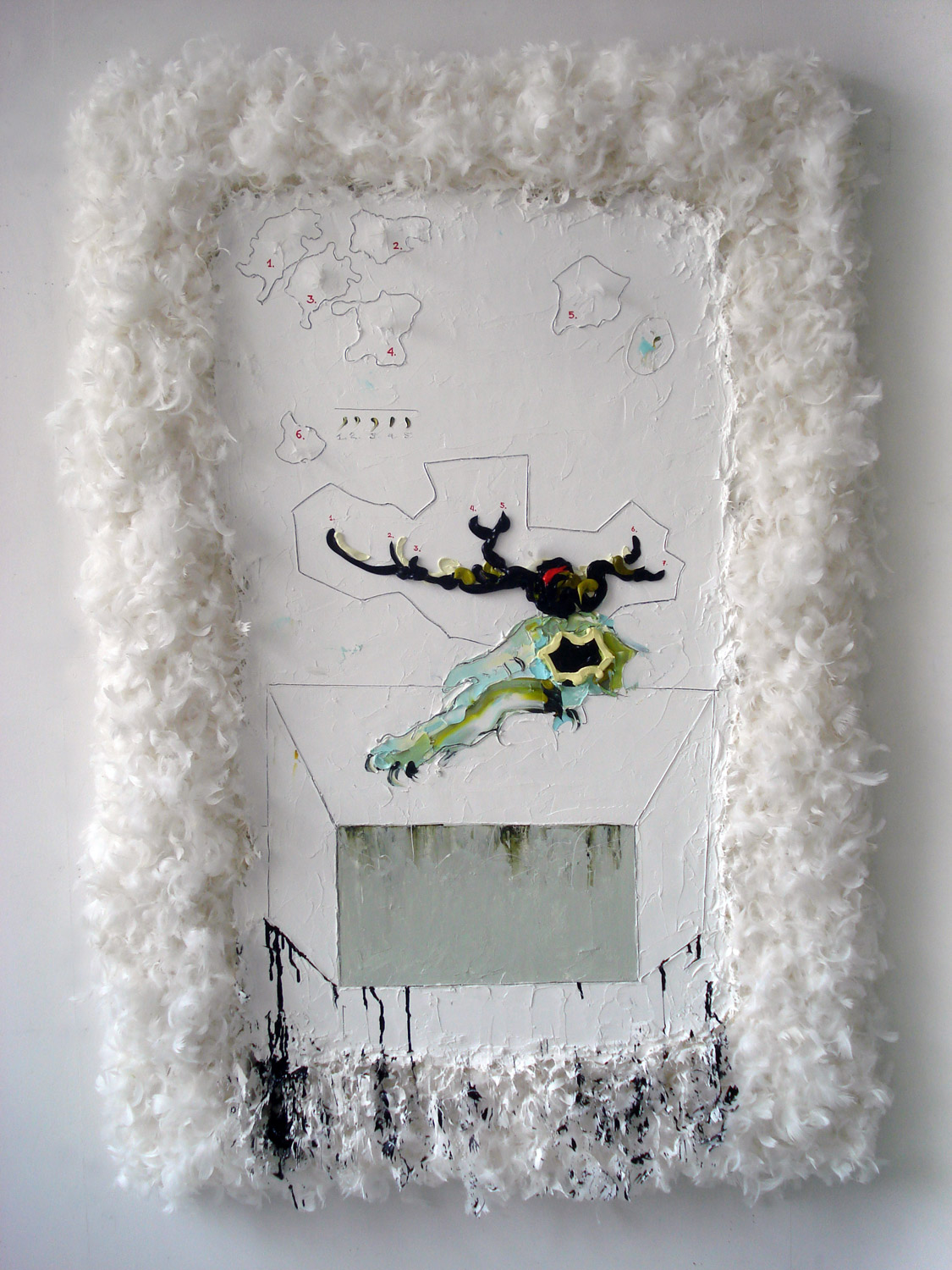
WHITE SOUL OF DEER . 2009
Oil, feathers on canvas, 160 x 110 x 15 cm

TWO . 2009 / From the Series FEATHERED PAINTING
Oil, feathers on canvas, 125 x 85 x 15 cm
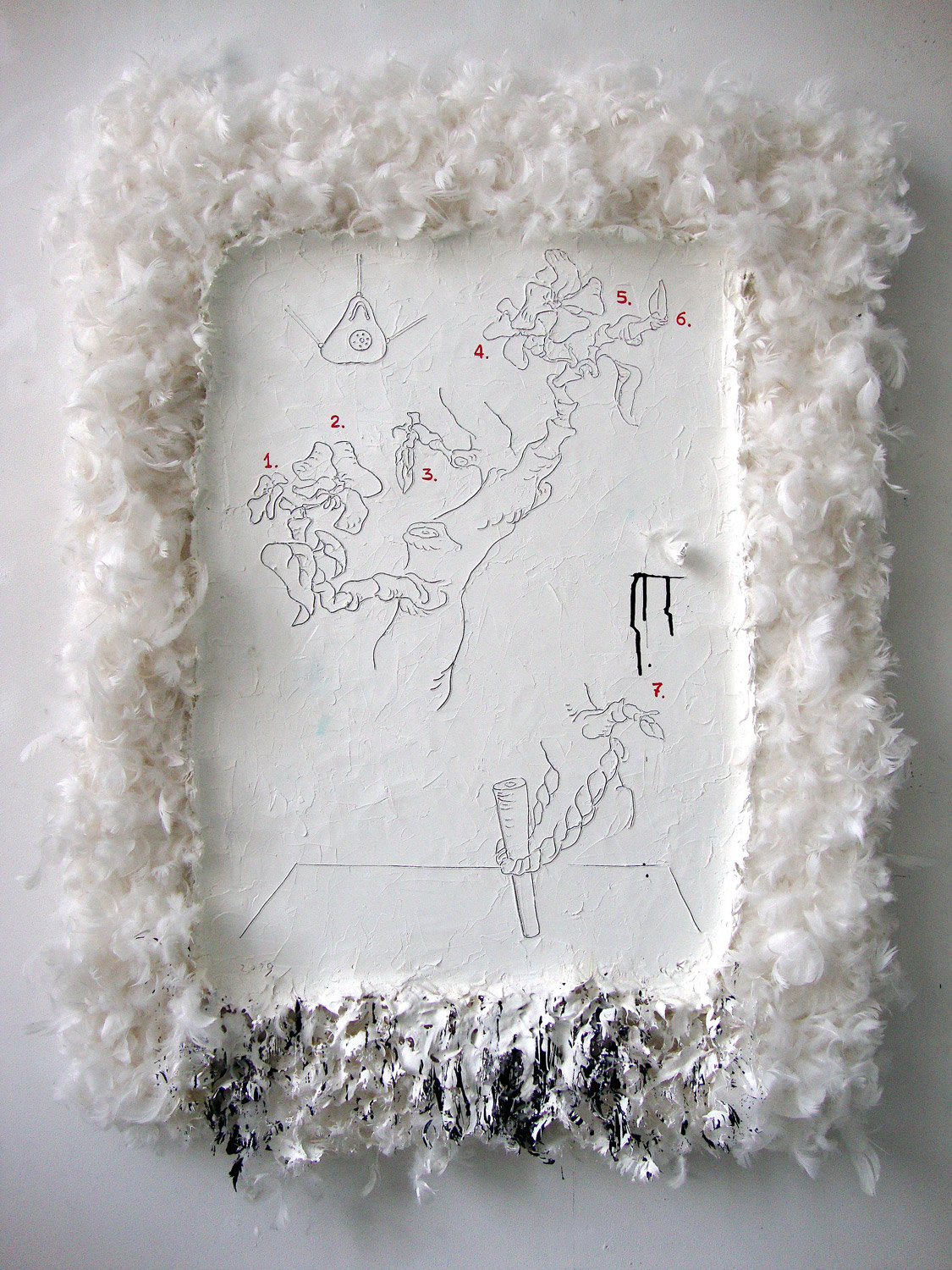
THIRTEEN . 2009
Oil, feathers on canvas, 125 x 85 x 15 cm
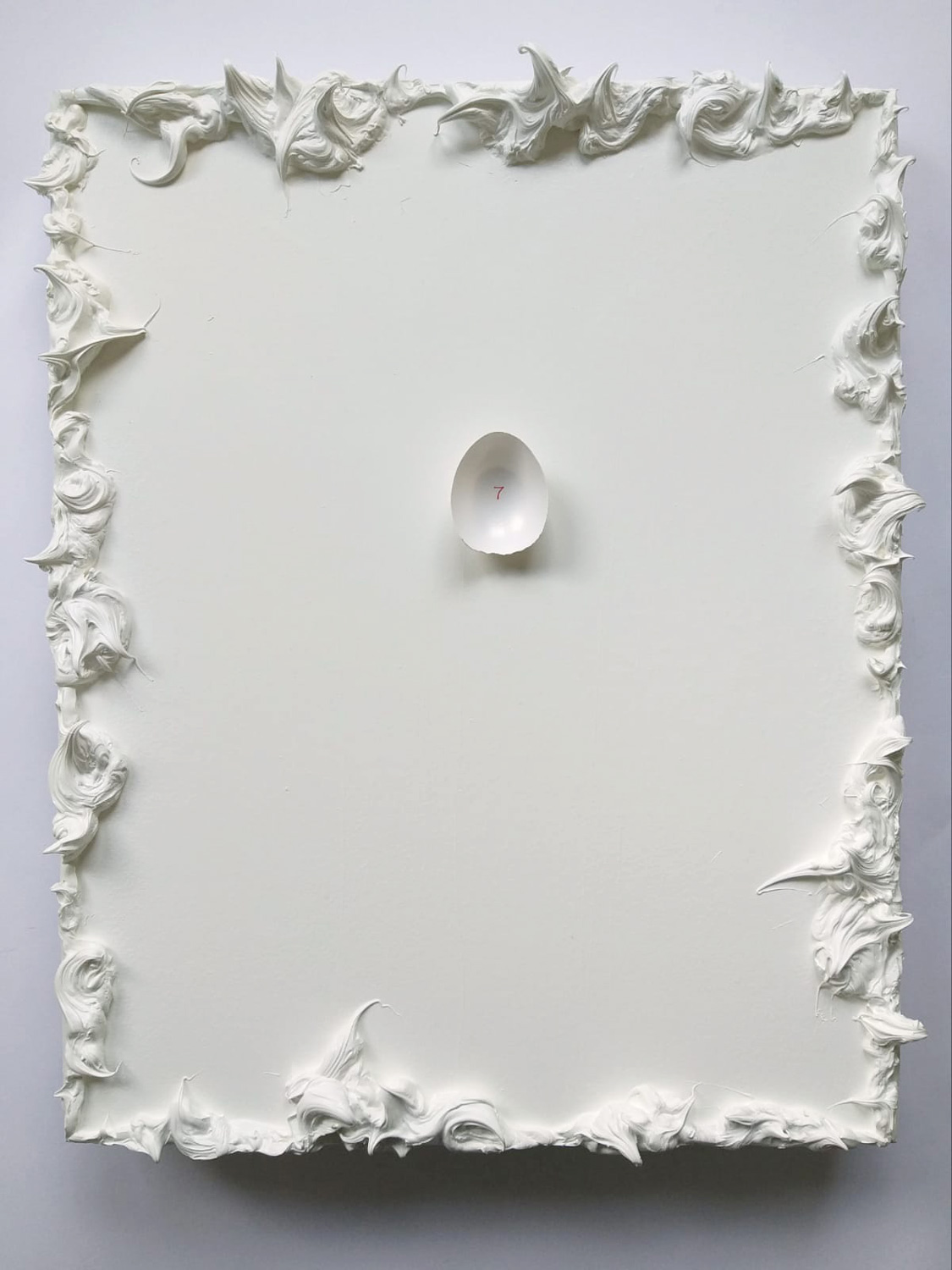
SEVEN . 2020 / From the Series INCUBATION
Tempera on eggshell, oil on canvas, 50 x 40 x 6 cm
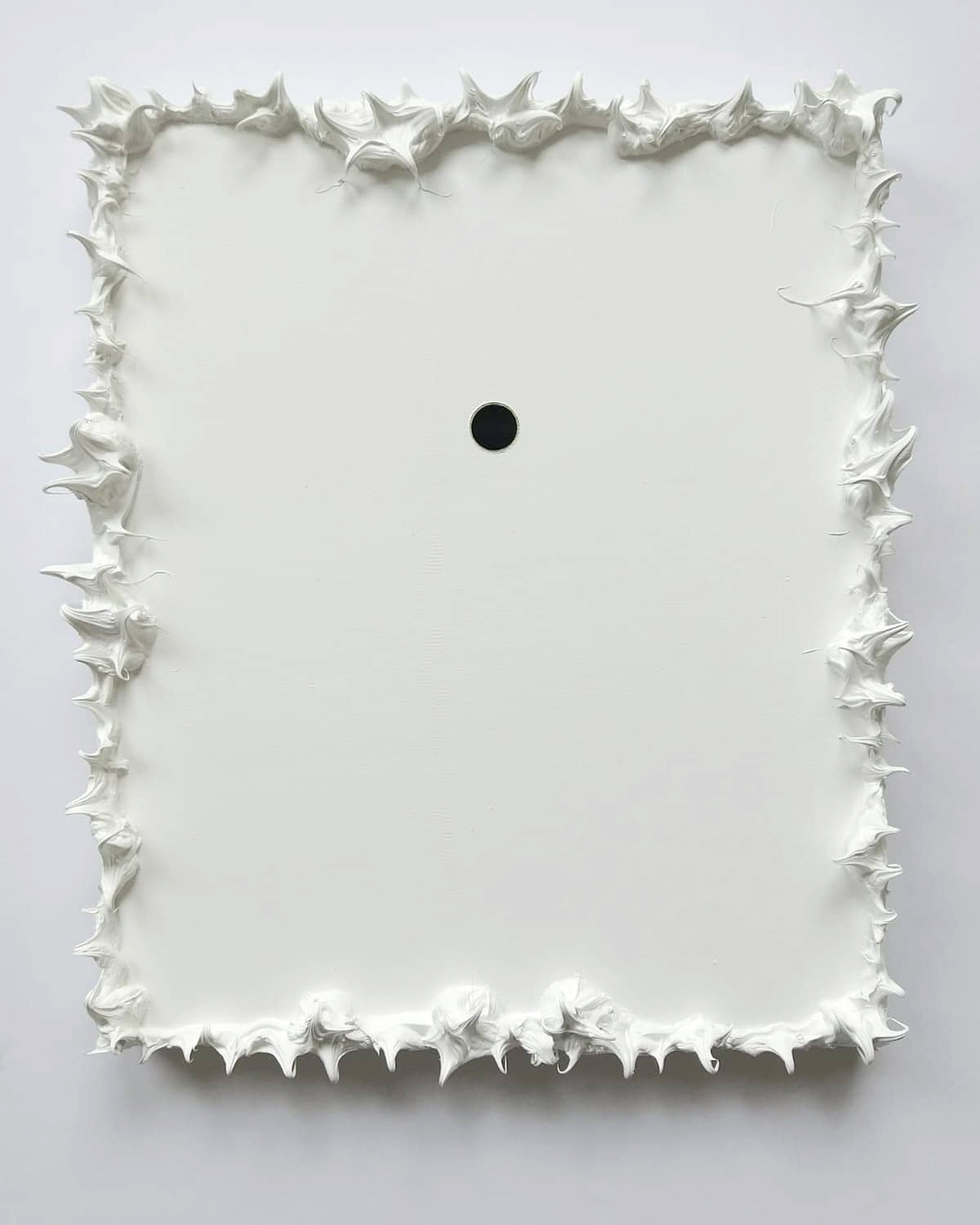
FEATHERED POINT . 2020
Oil, black enamel on canvas, 30 x 25 x 5 cm

THE POINT . 2019 / From the Series POWER OF THE POINT
Oil, black enamel on canvas, 150 x 100 cm
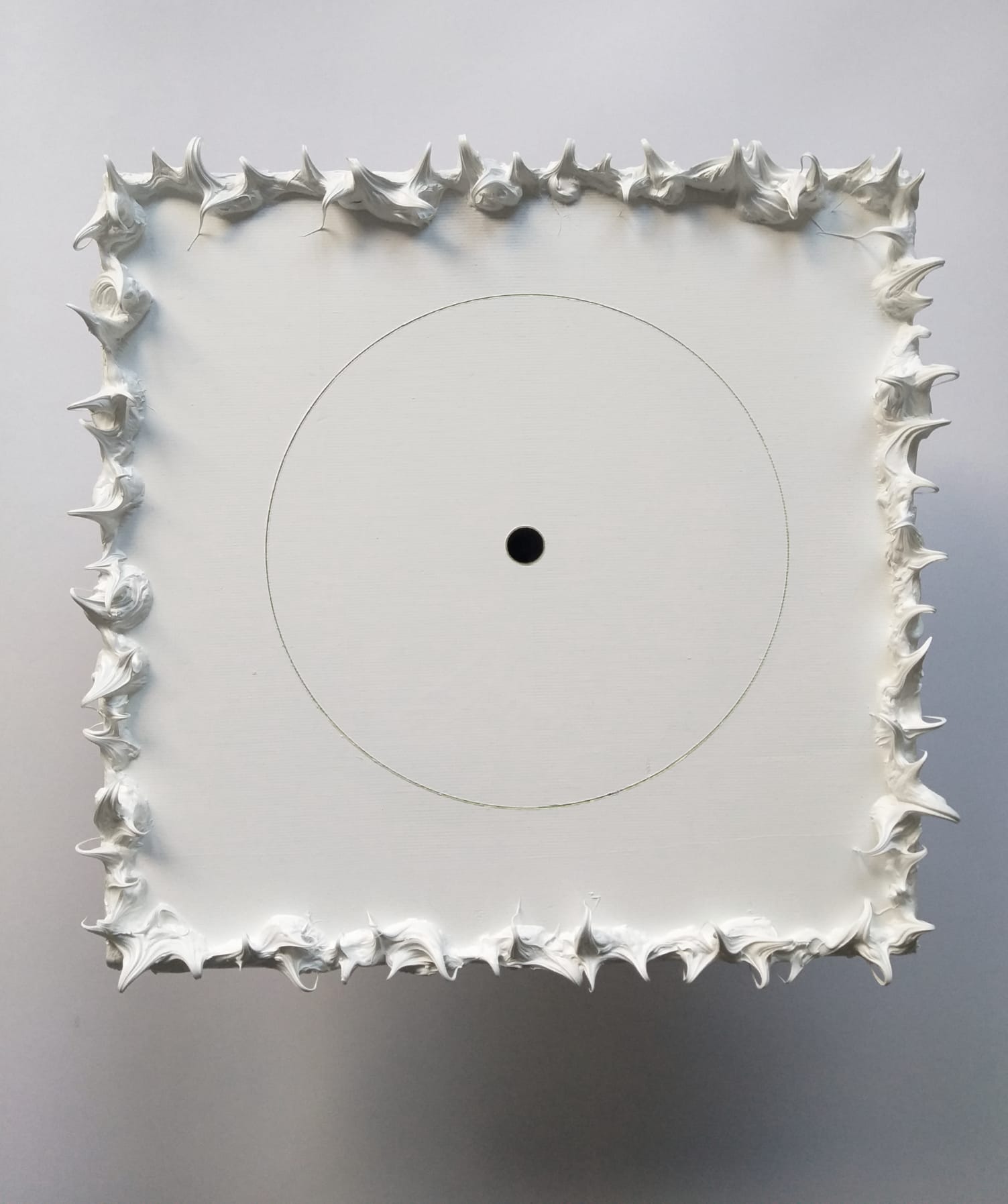
POINT IS EVERYTHING . 2021
Oil, black enamel on canvas, 30 x 30 cm
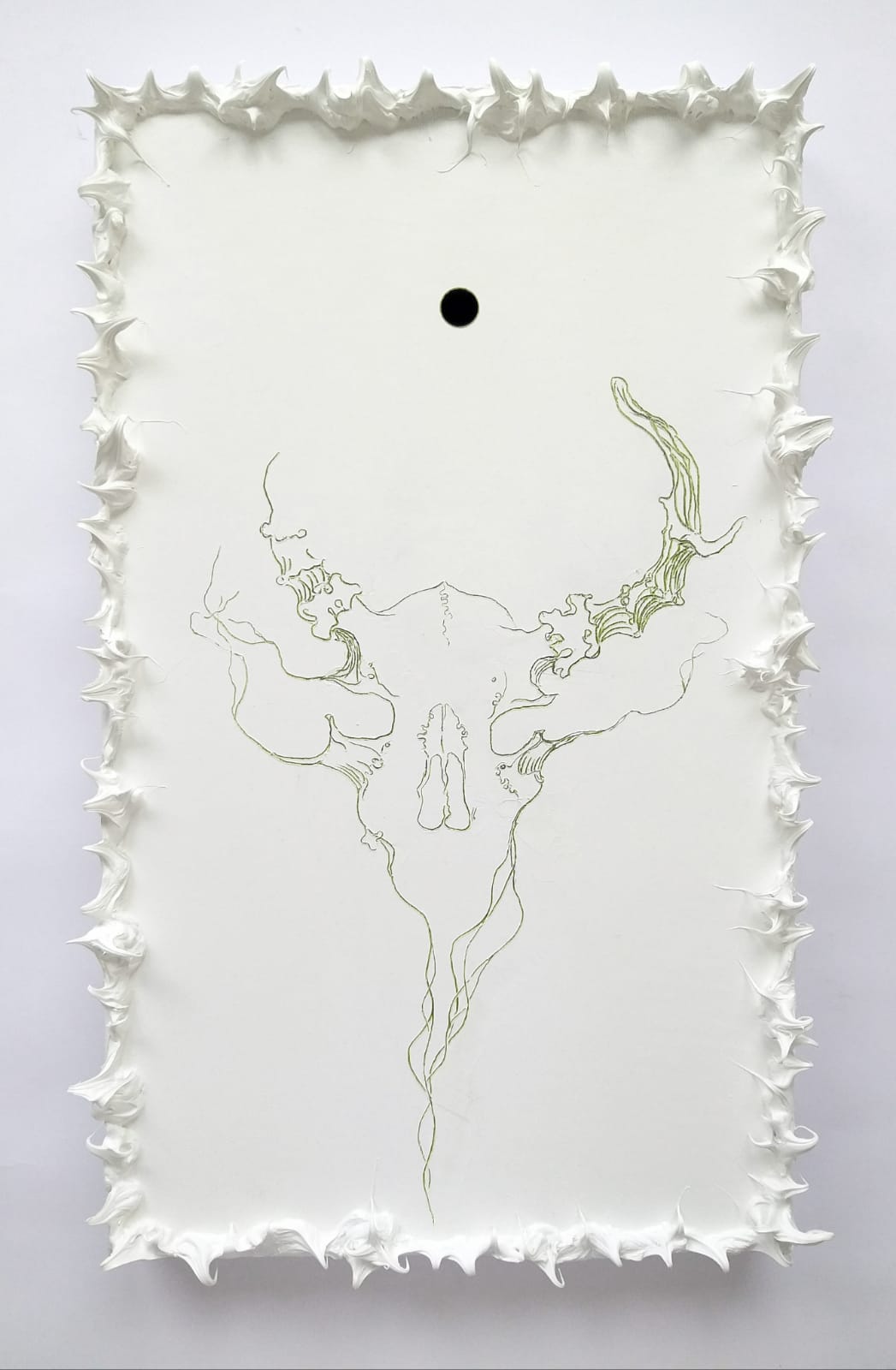
VANITAS 20:21 /Self-portrait/ . 2021
Oil, black enamel on canvas, 50 x 30 cm
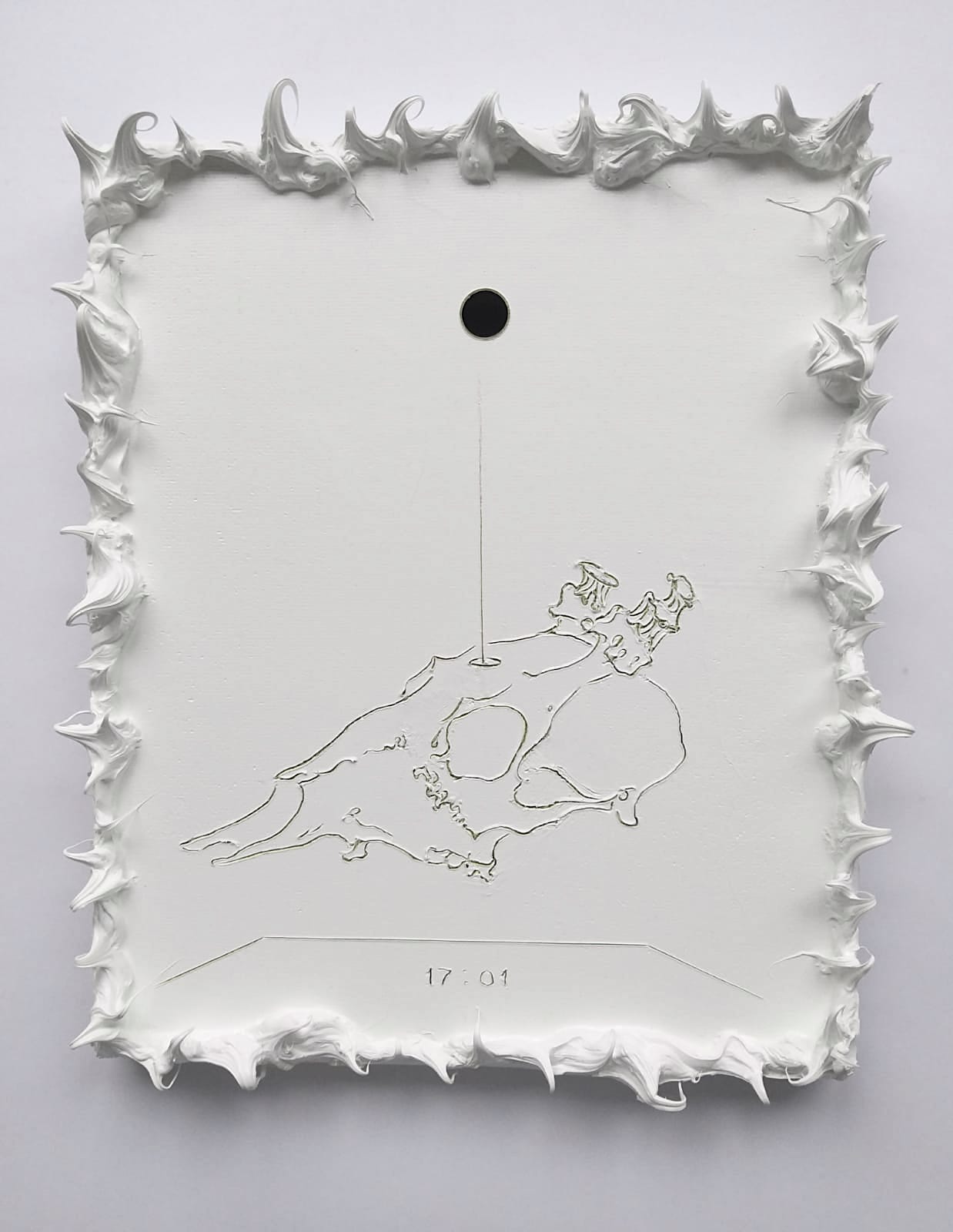
VANITAS 17: 01 . 2020
Oil, black enamel on canvas, 30 x 25cm
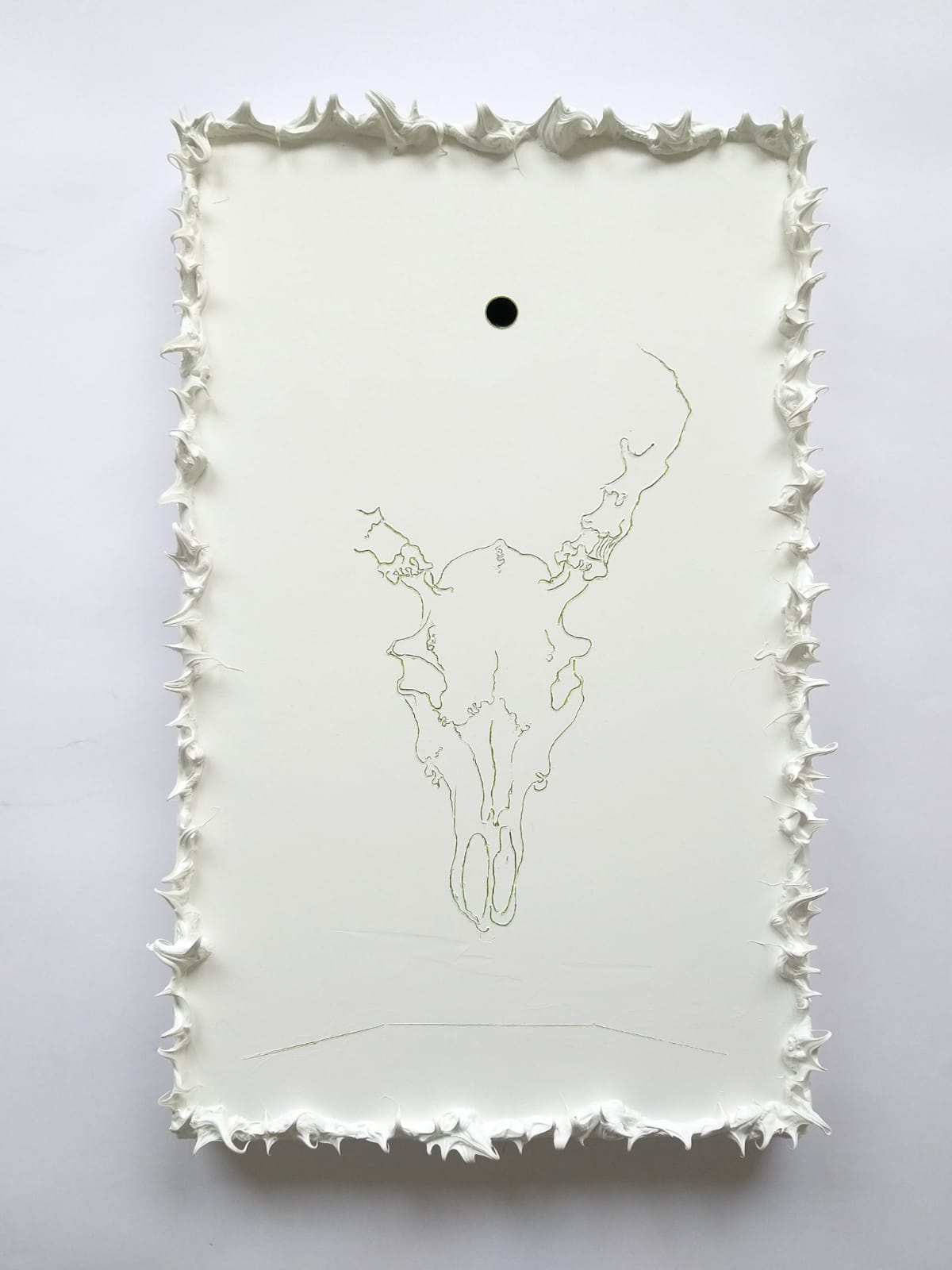
DEER AND ITS POINT . 2021
Oil, black enamel on canvas, 50 x 30cm
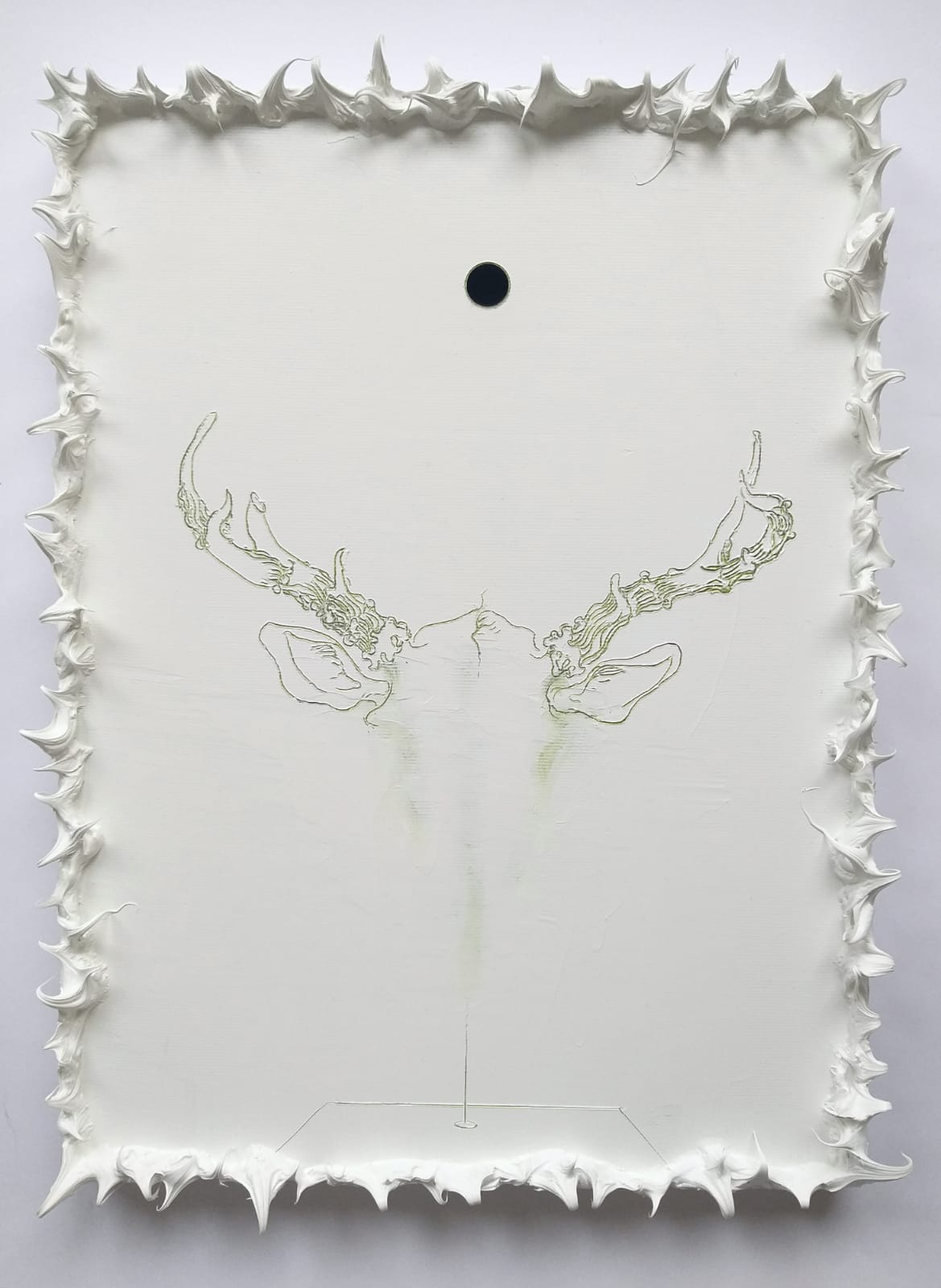
MATERIALIZATION . 2021
Oil, black enamel on canvas, 40 x 30cm
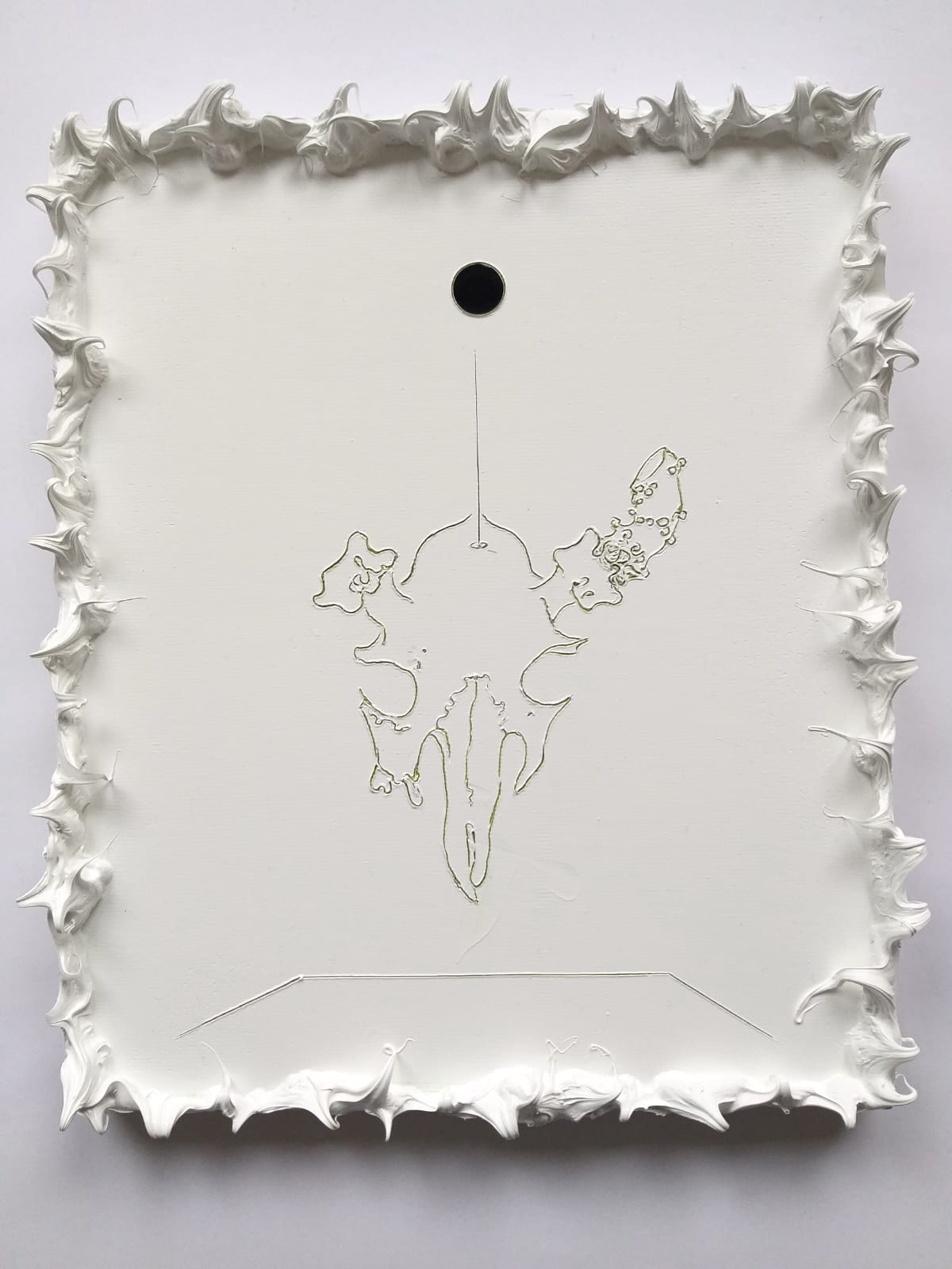
VANITAS 16:56 . 2020
Oil, black enamel on canvas, 30 x 25cm
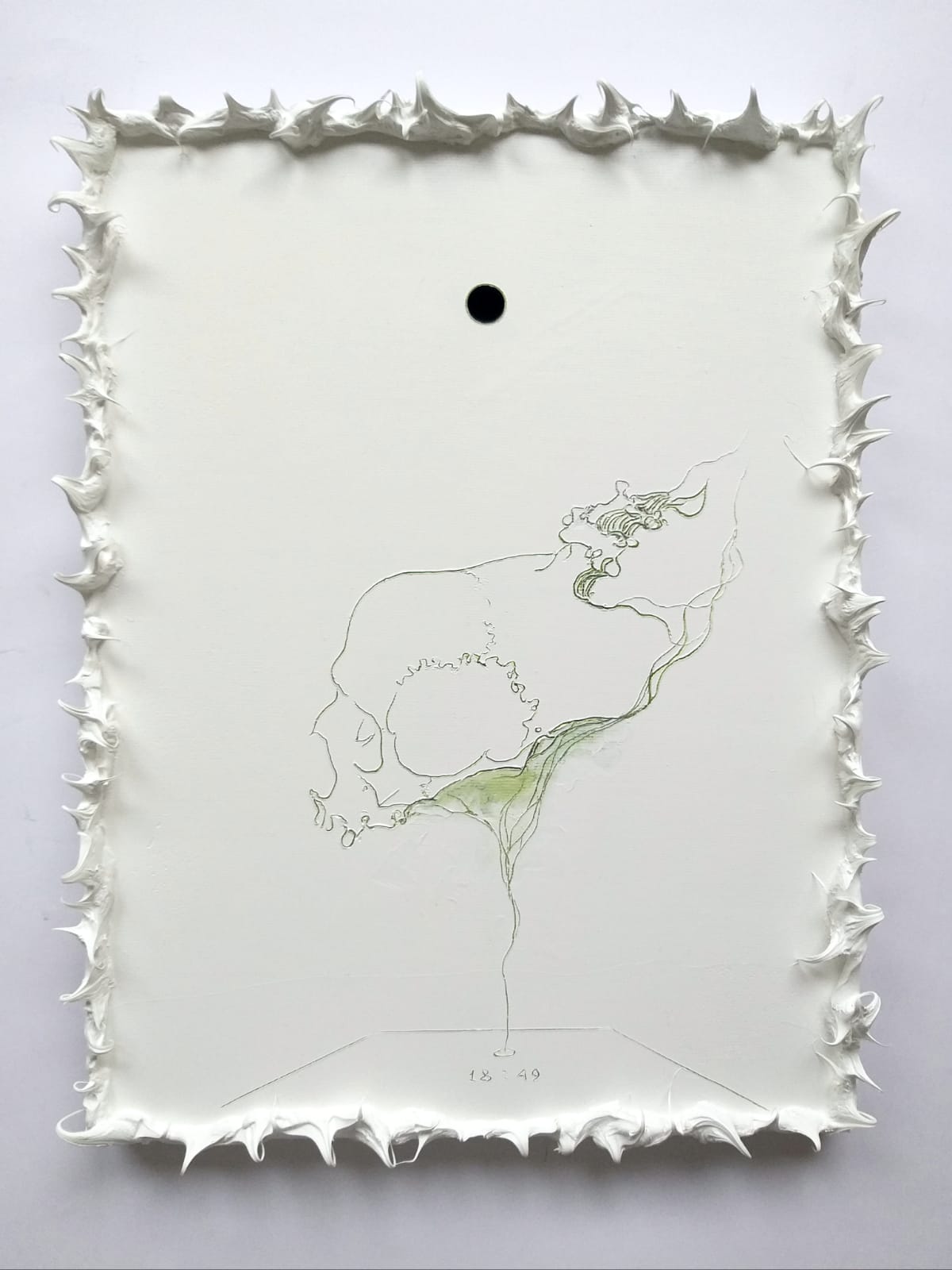
VANITAS 18:49 /Chopin/ . 2021
Oil, black enamel on canvas, 40 x 30cm

BLACK BILL 4,17 . 2021
Oil, black enamel on canvas, 40 x 25 cm

BLACK BILL 10,16 . 2021
Oil, black enamel on canvas, 40 x 25 cm
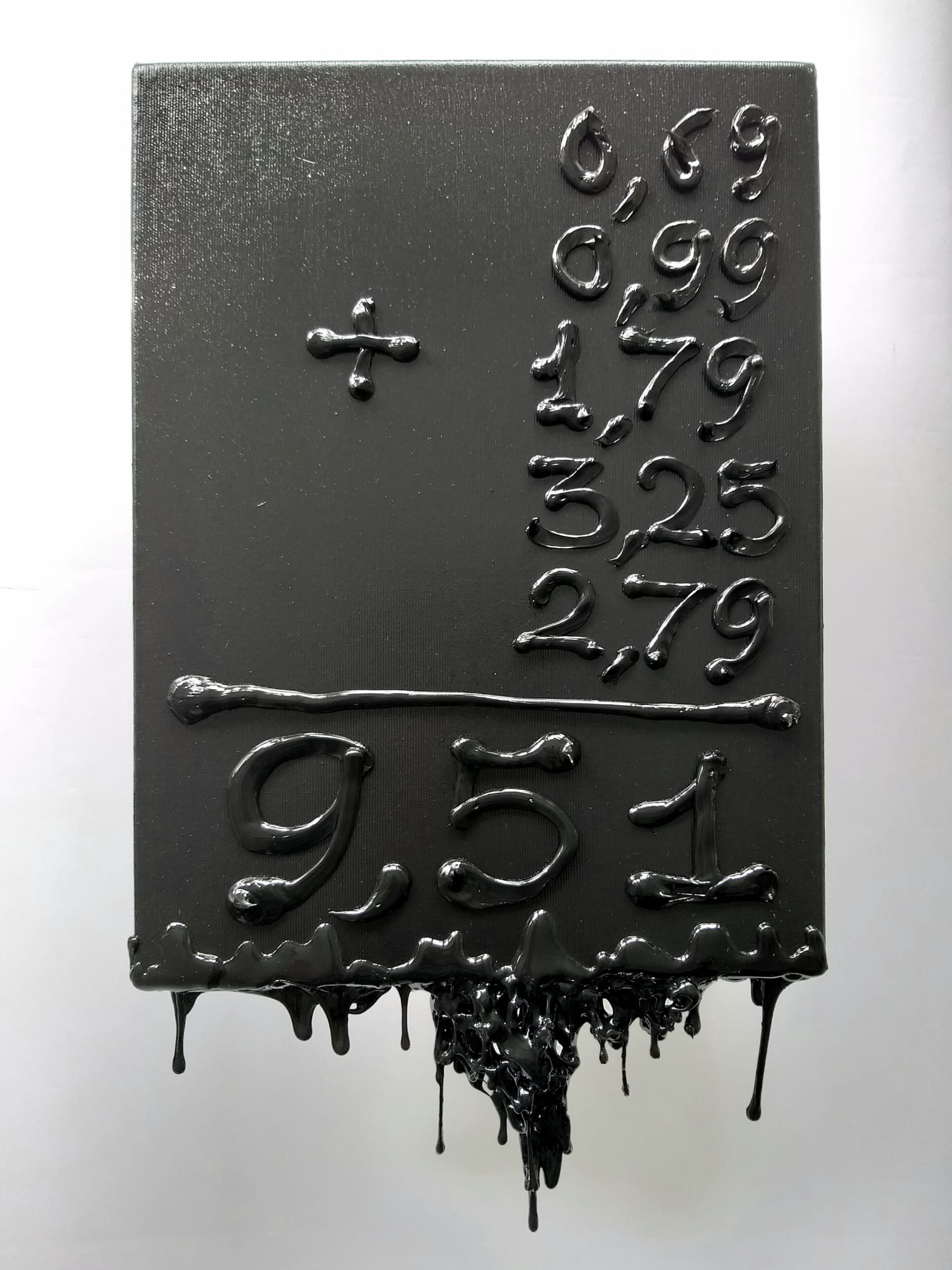
BLACK BILL 9,51 . 2021
Oil, black enamel on canvas, 50 x 30 cm
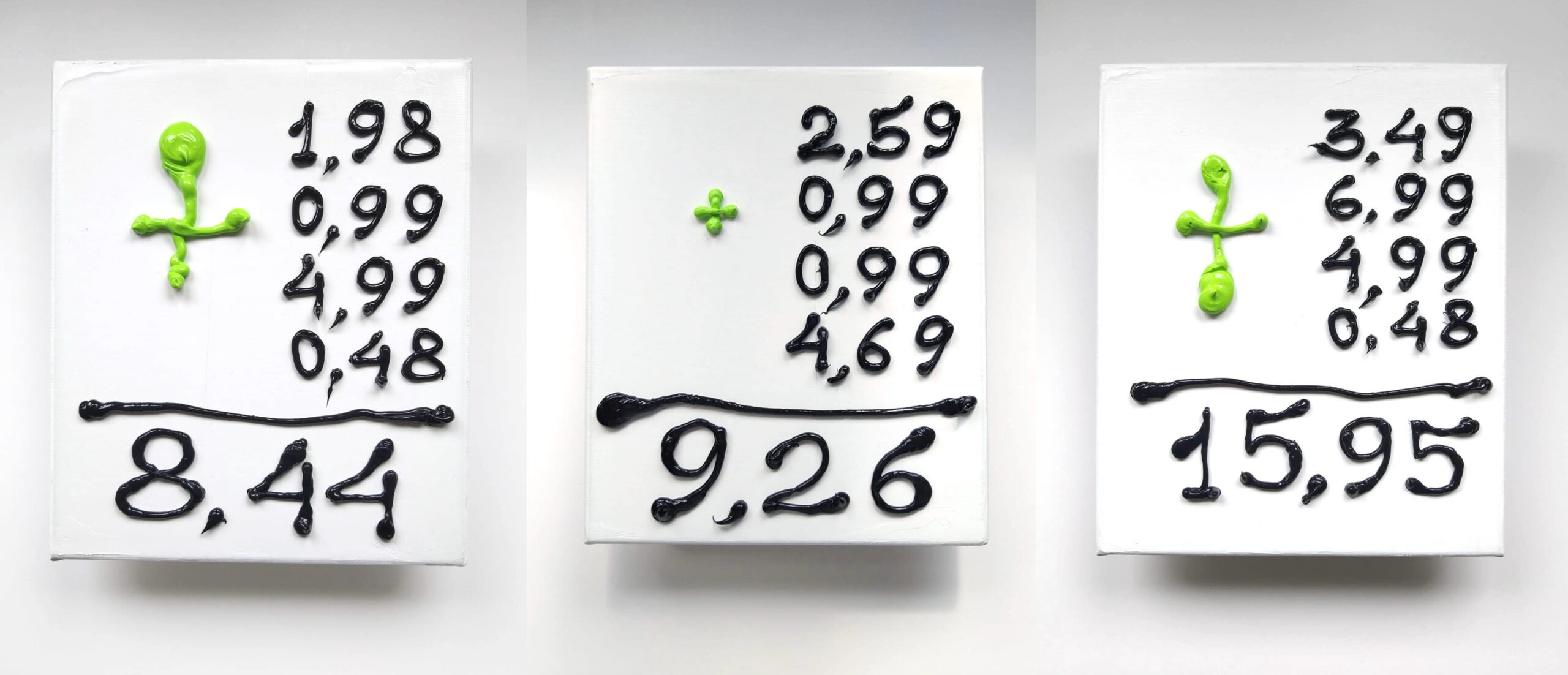
From the Series SMALL BILLS. 2022
Oil on canvas, 30 x 25 cm
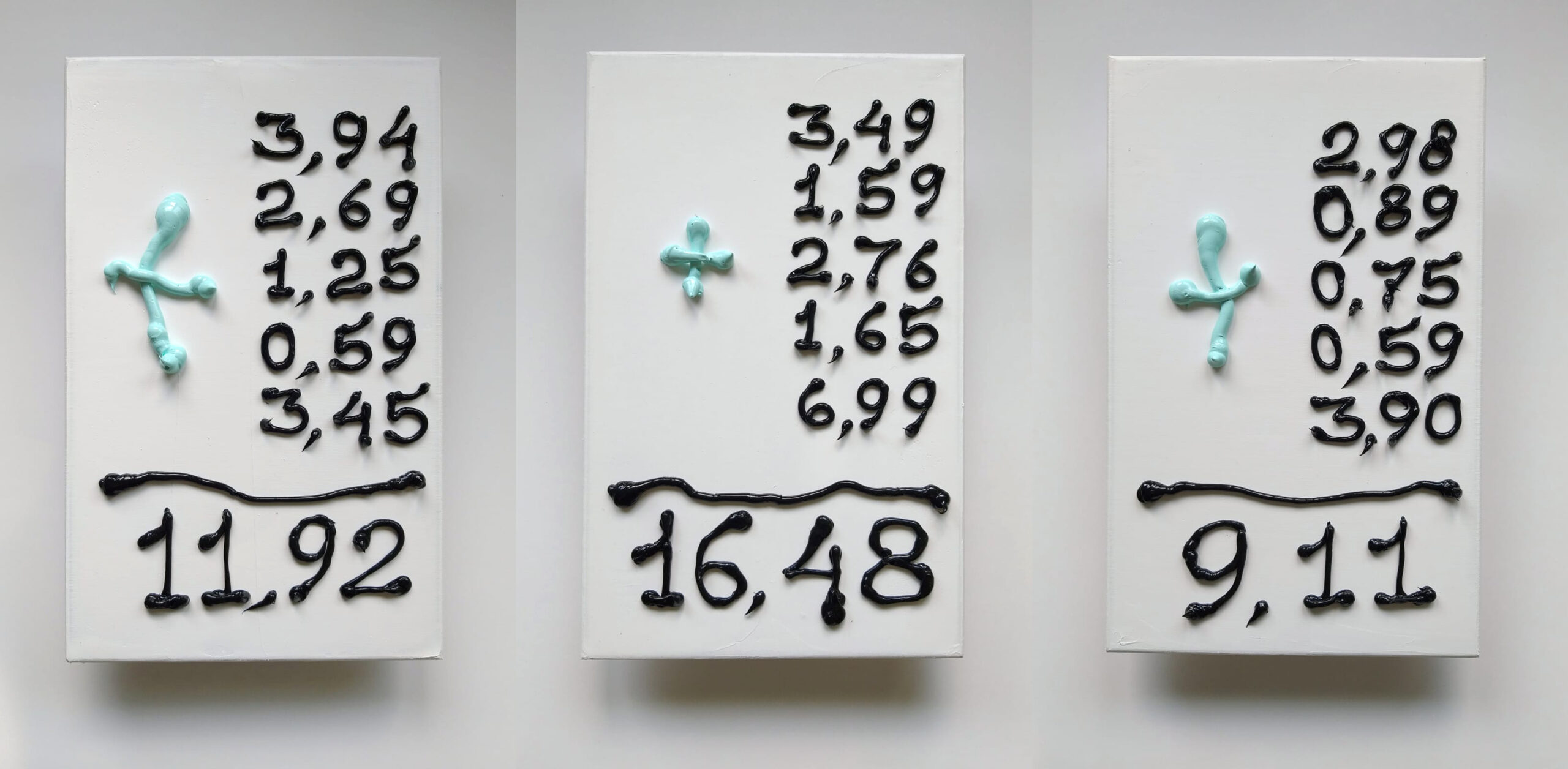
From the Series SMALL BILLS . 2022
Oil on canvas, 40 x 25 cm
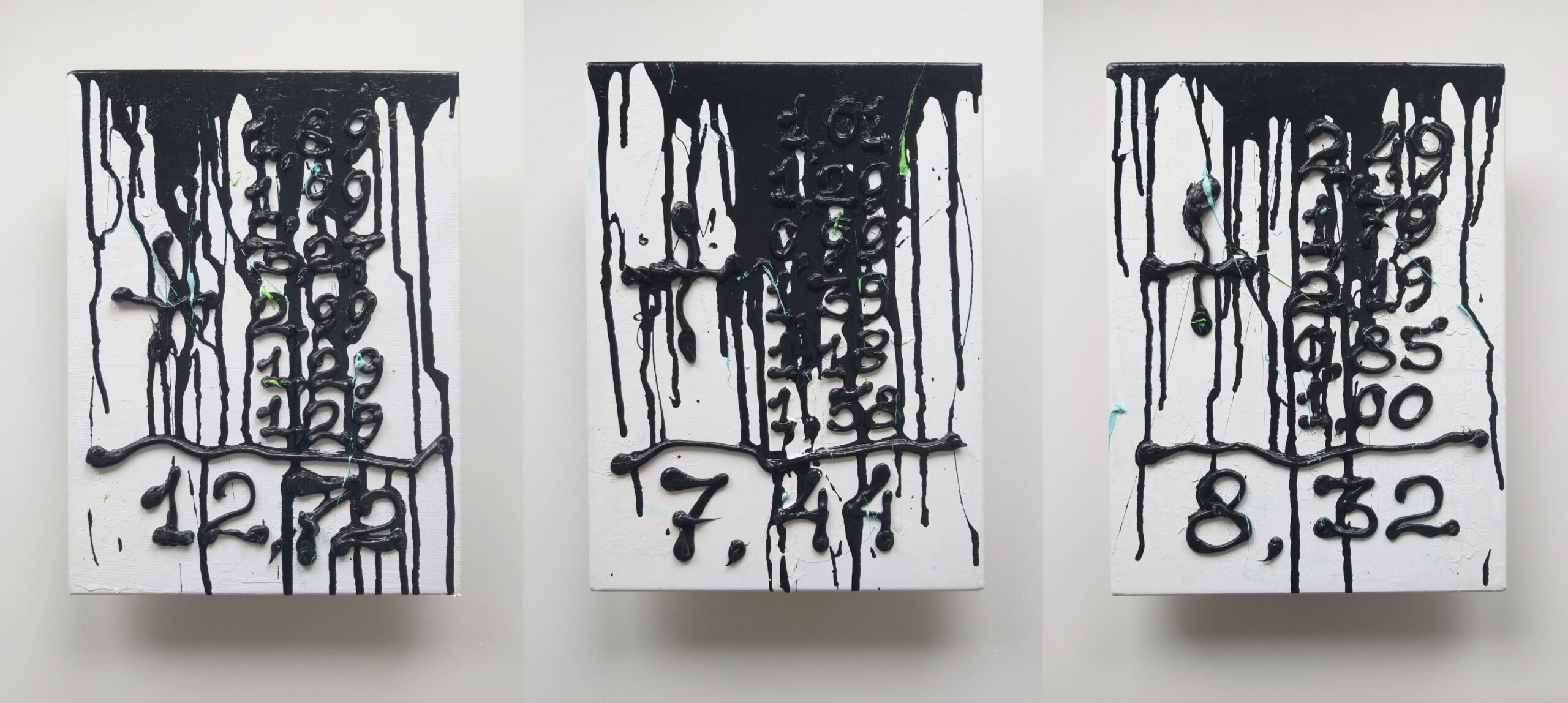
From the Series VANISHING BILLS . 2023
Oil, black enamel on canvas, 40 x 30 cm
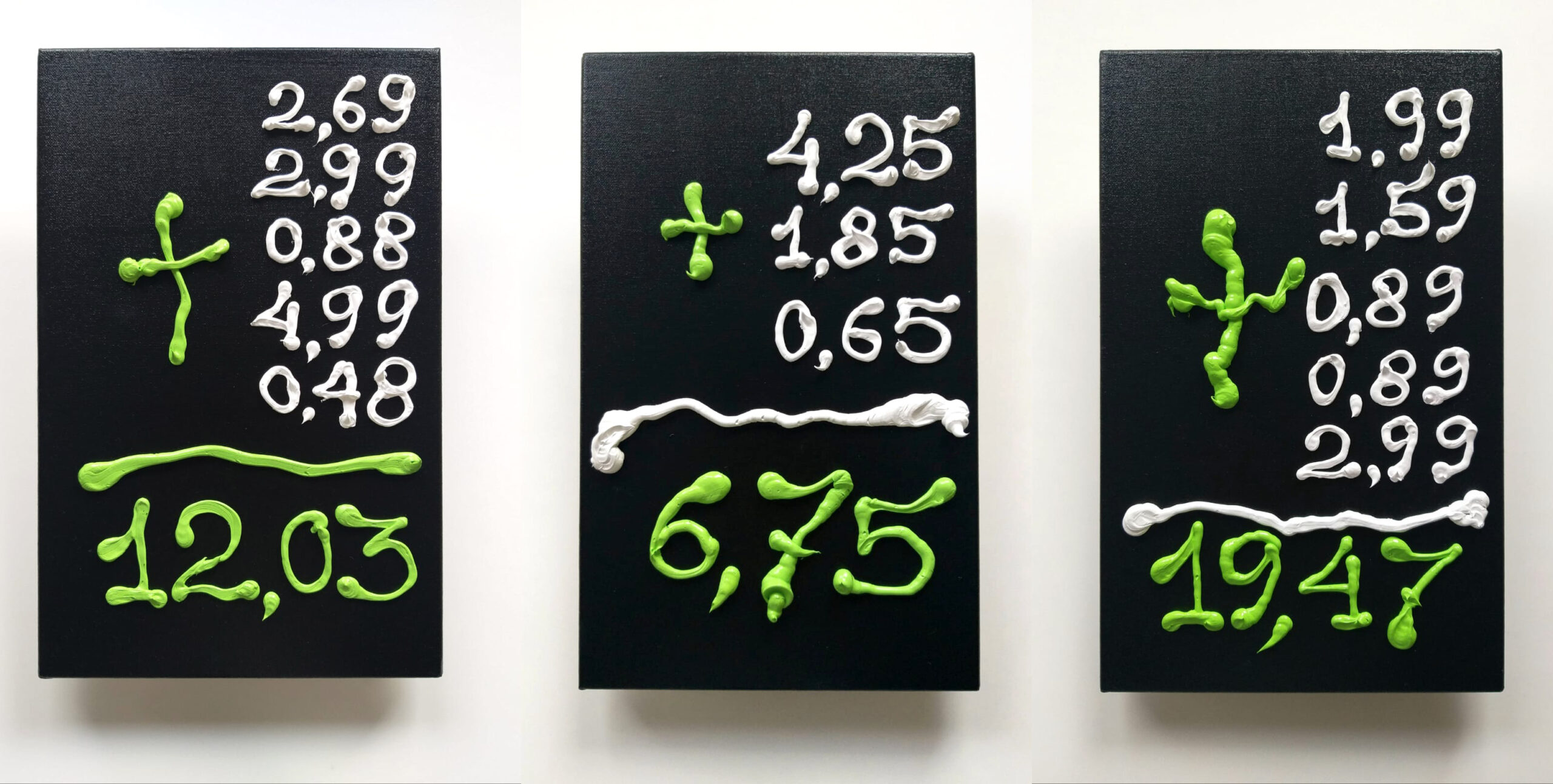
From the Series GREEN BILLS . 2022
Oil on canvas, 40 x 30 cm
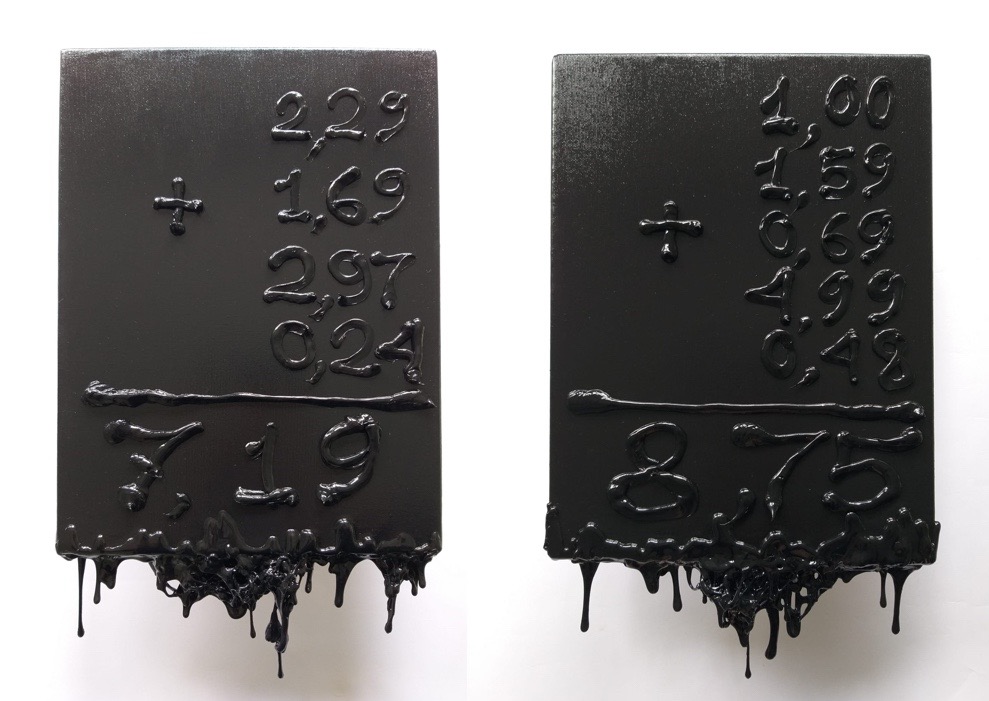
From the Series BLACK BILLS . 2021
Oil, black enamel on canvas, 50 x 30 cm

From the Series BLACK BILLS . 2021
Oil, black enamel on canvas, 40 x 25 cm
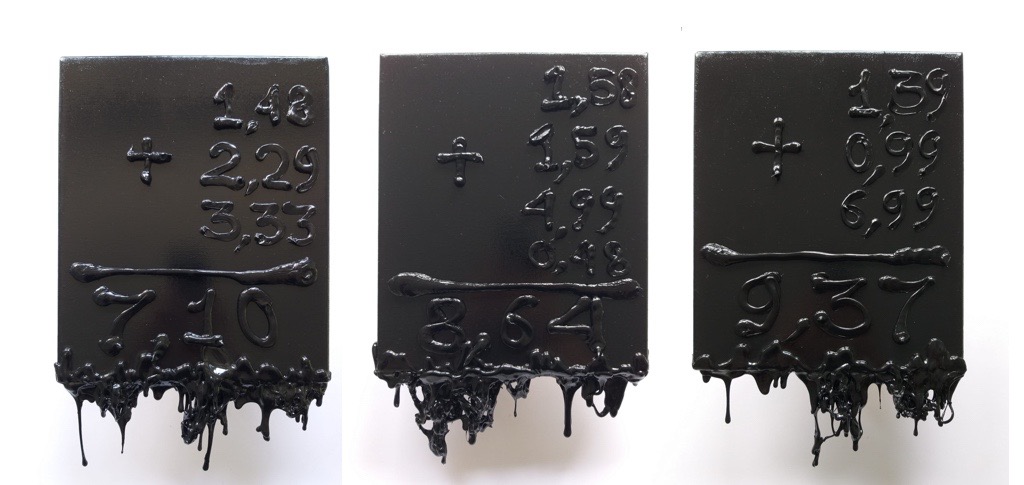
From the Series BLACK BILLS . 2021
Oil, black enamel on canvas, 40 x 25 cm
